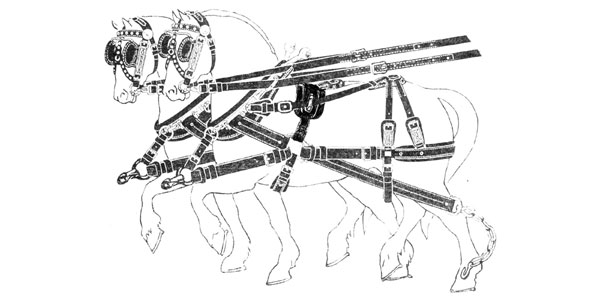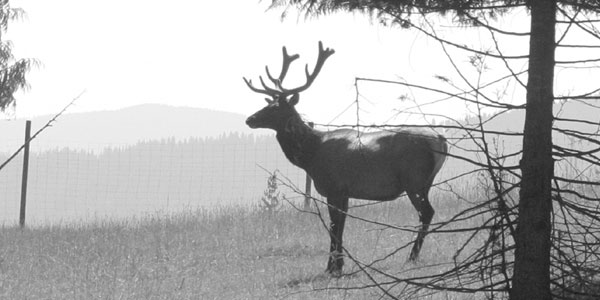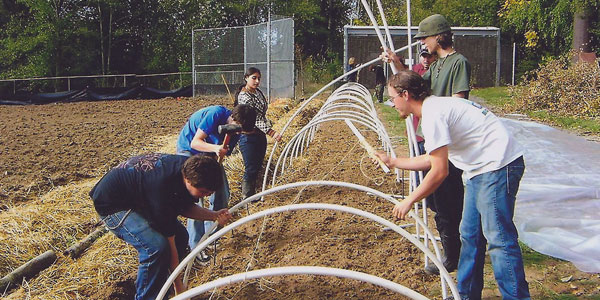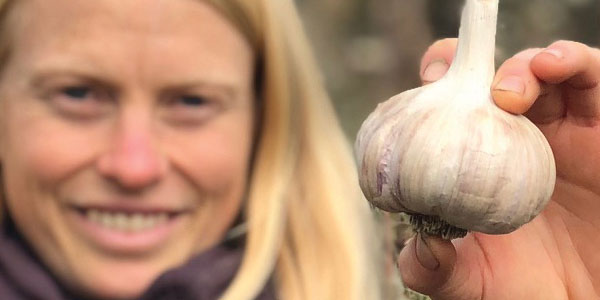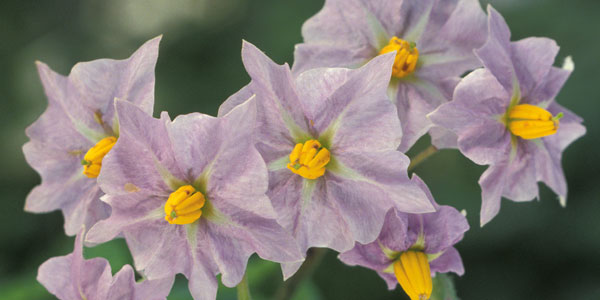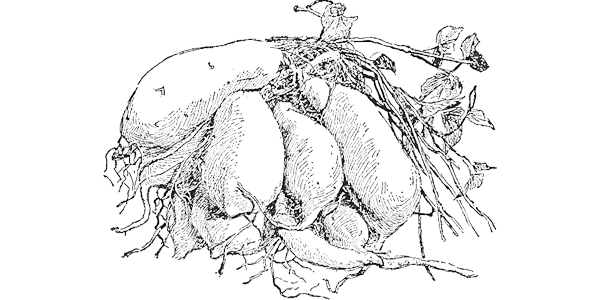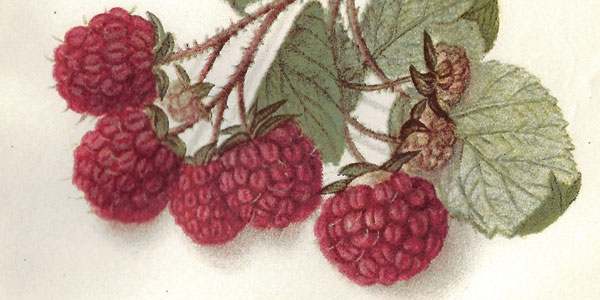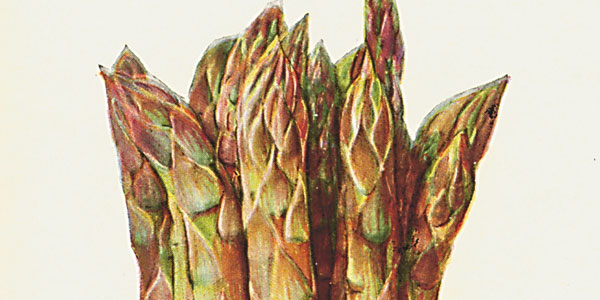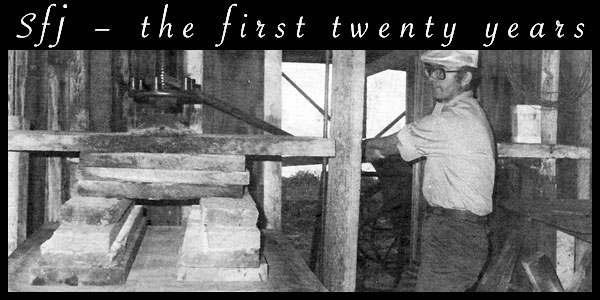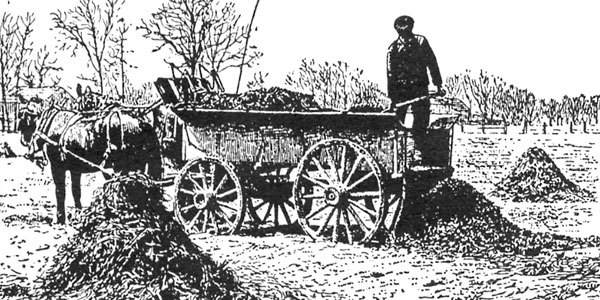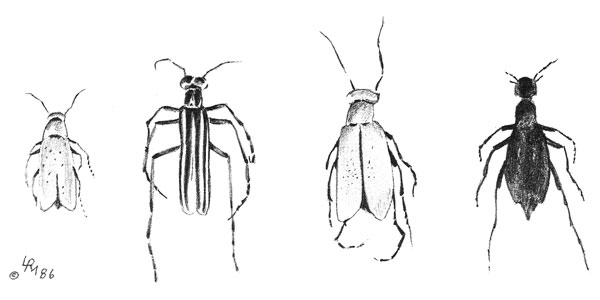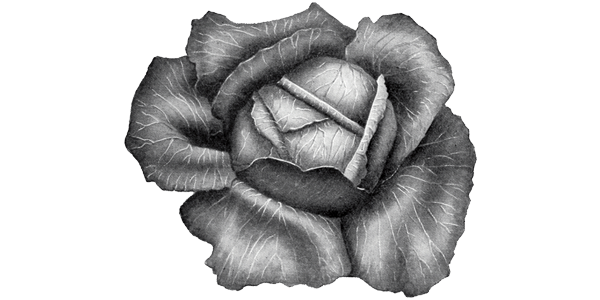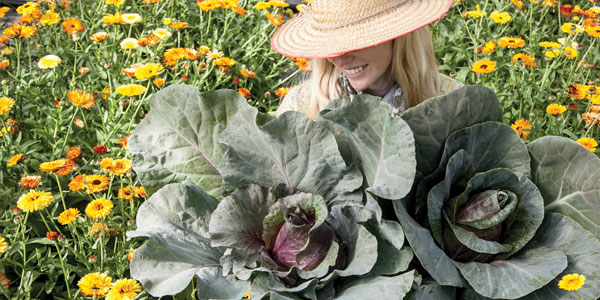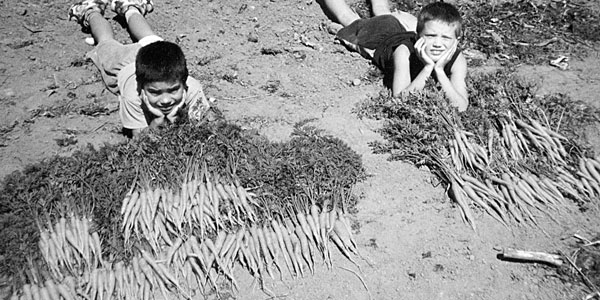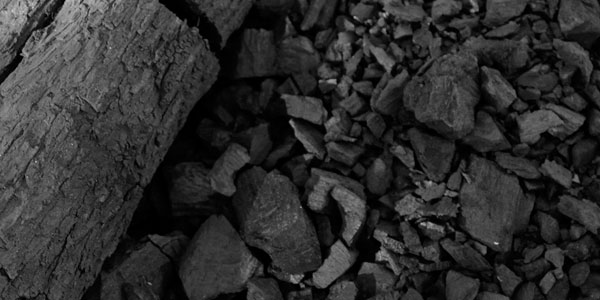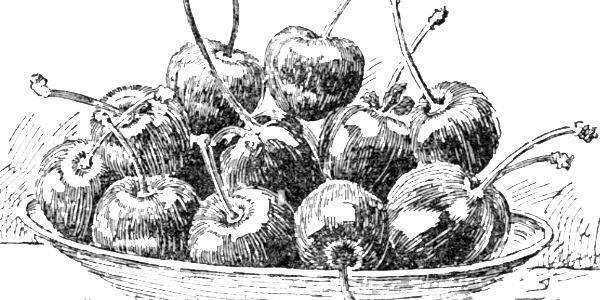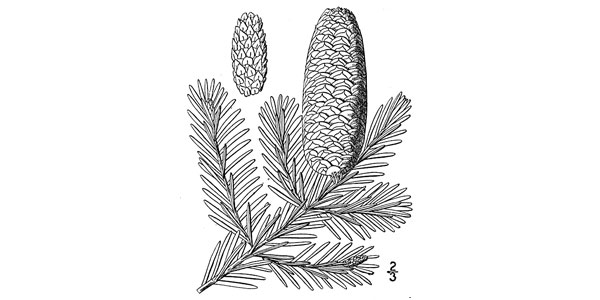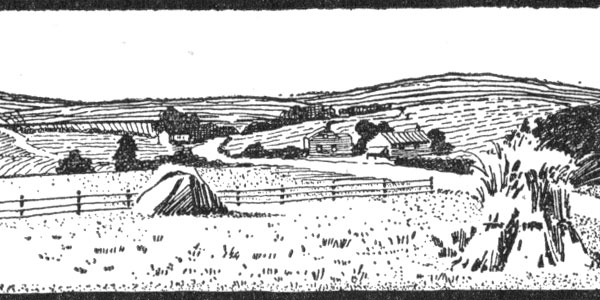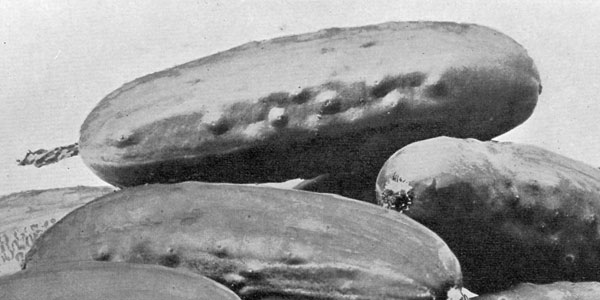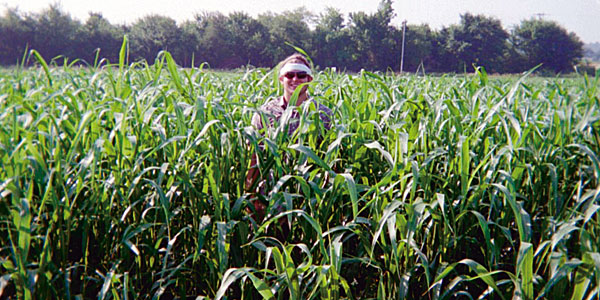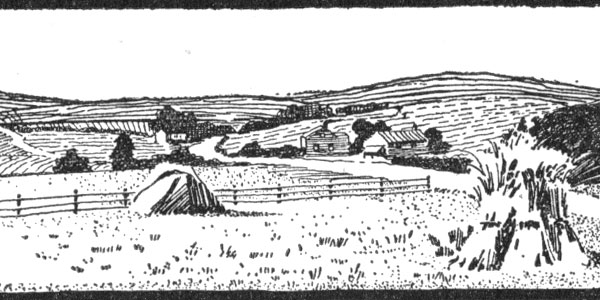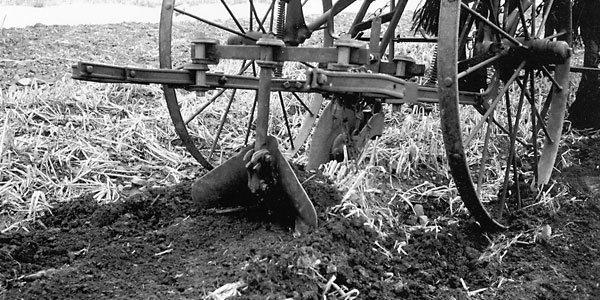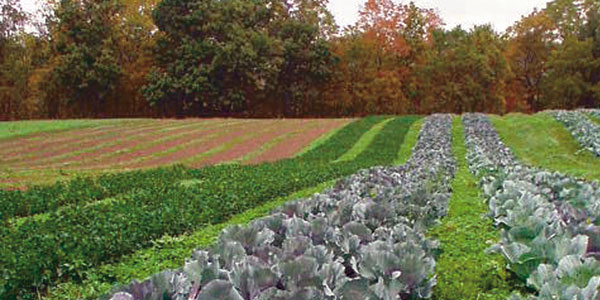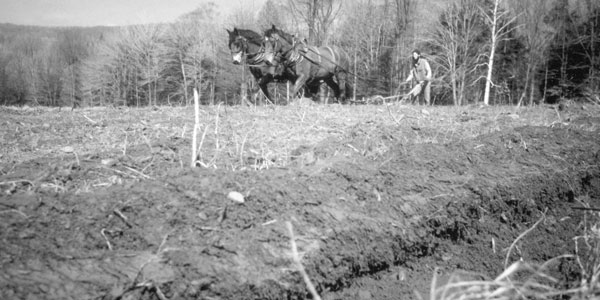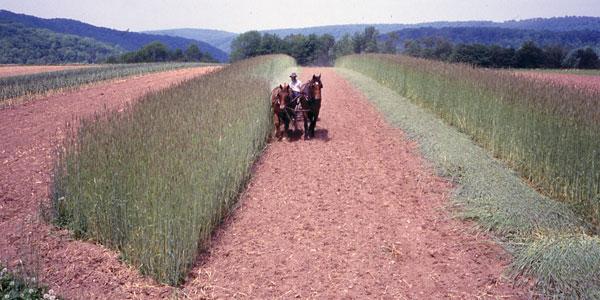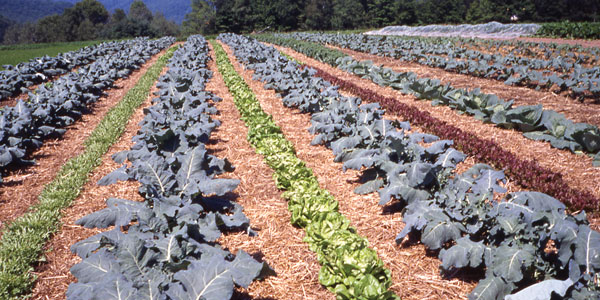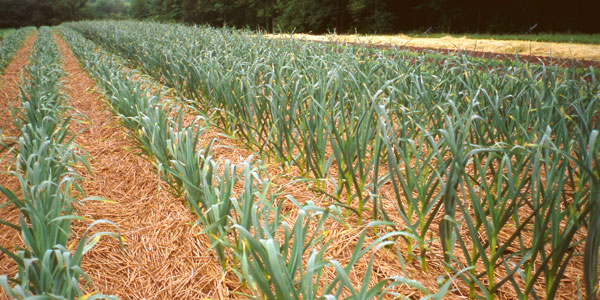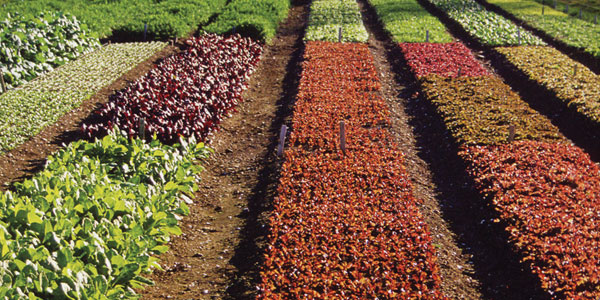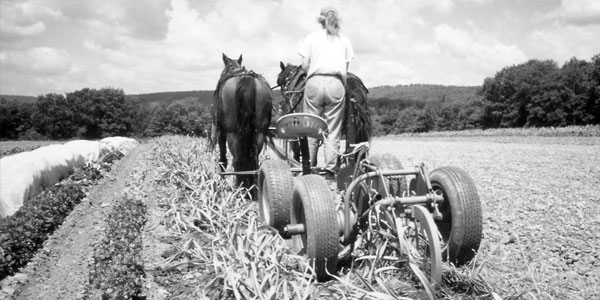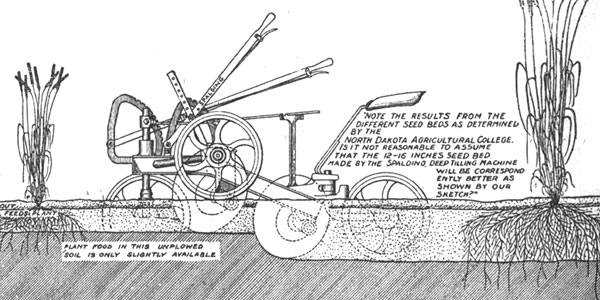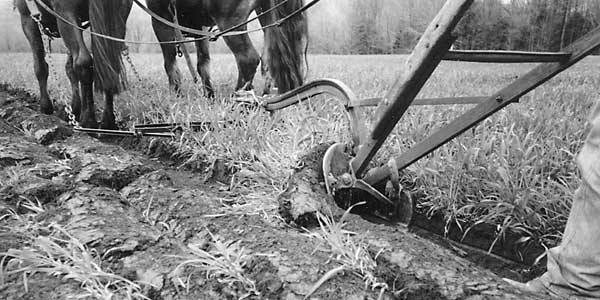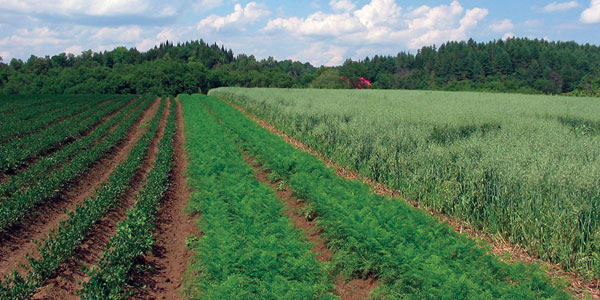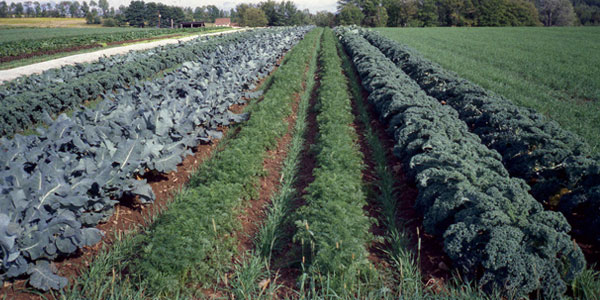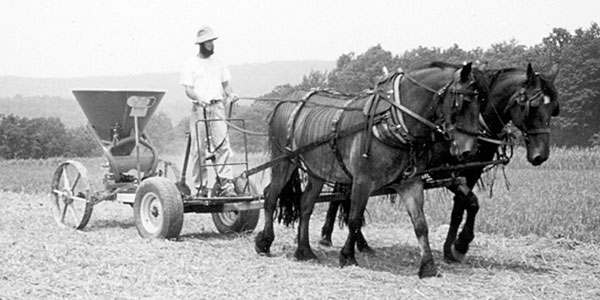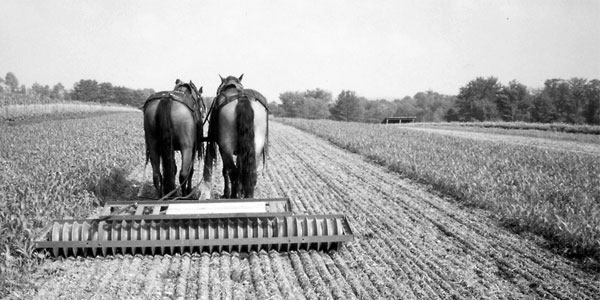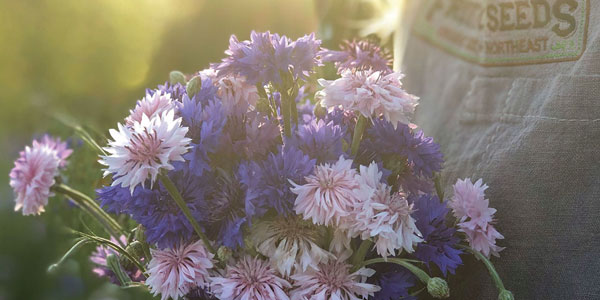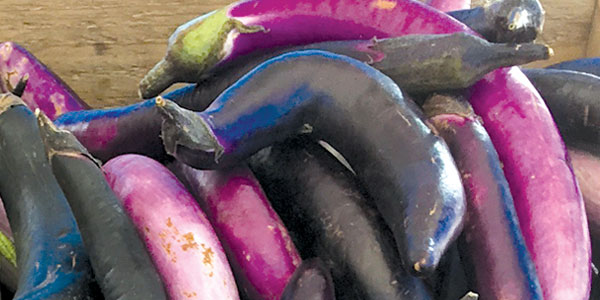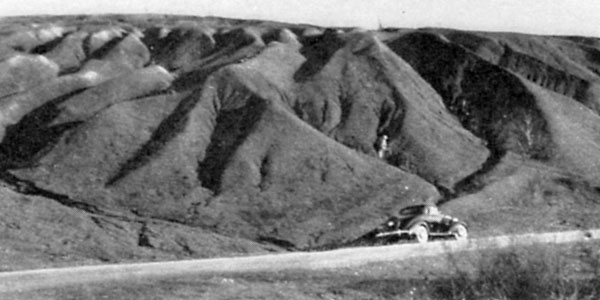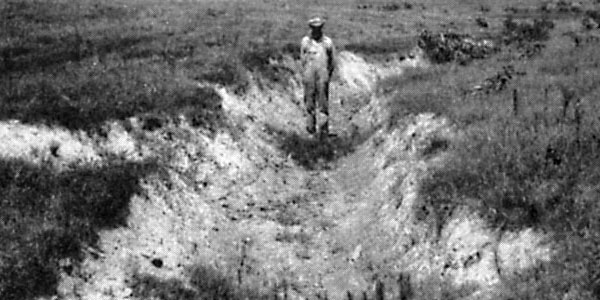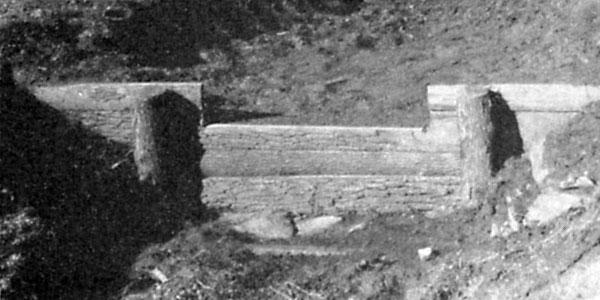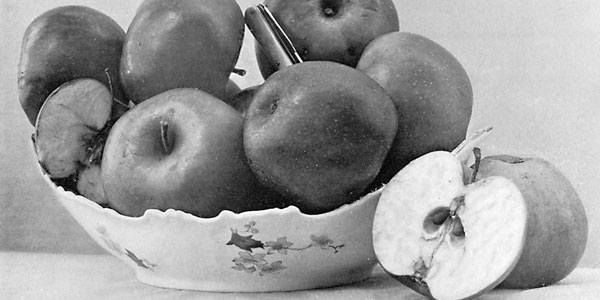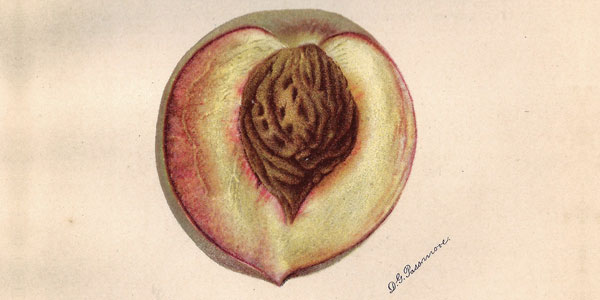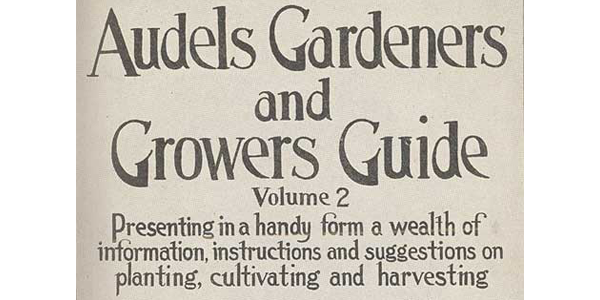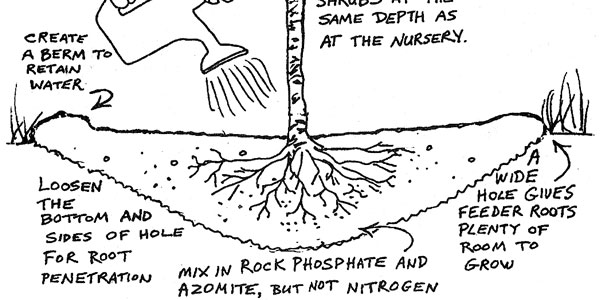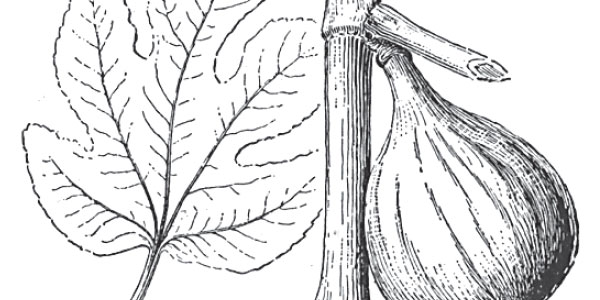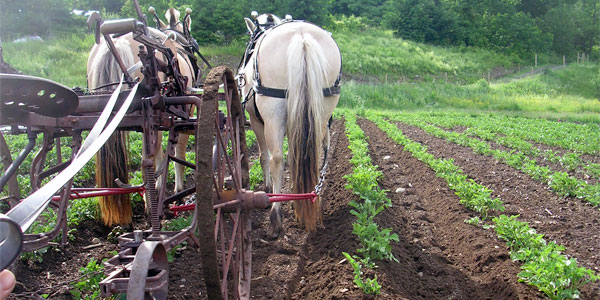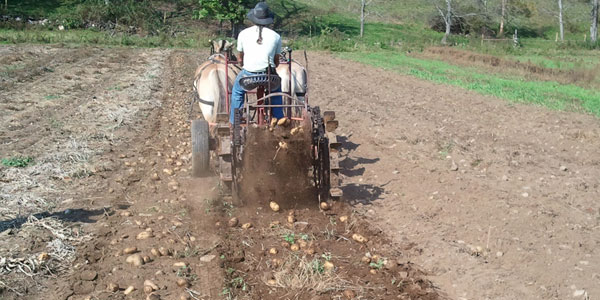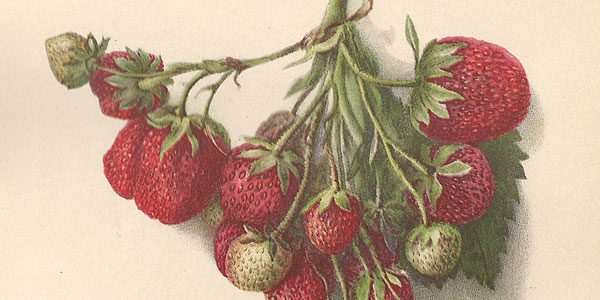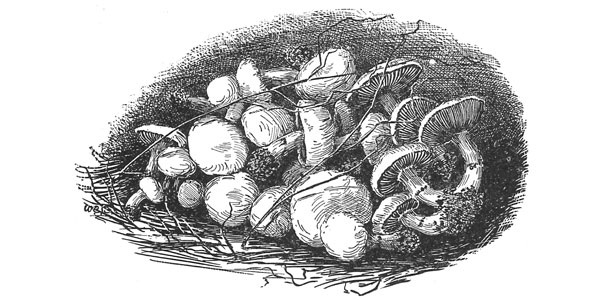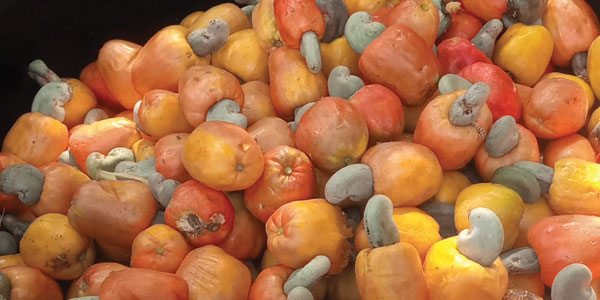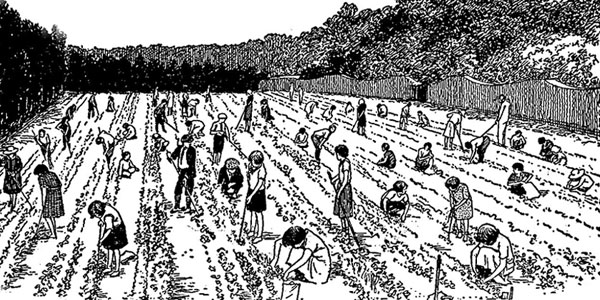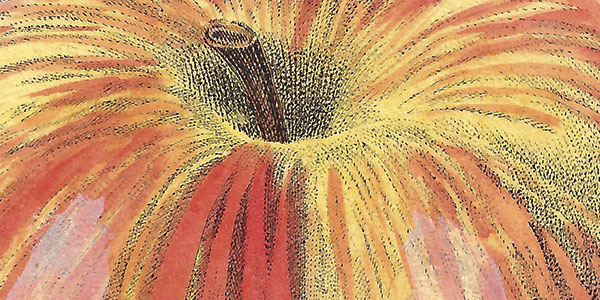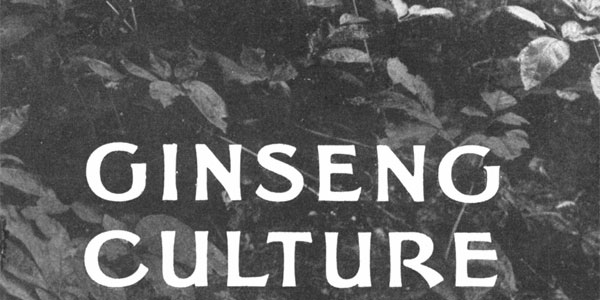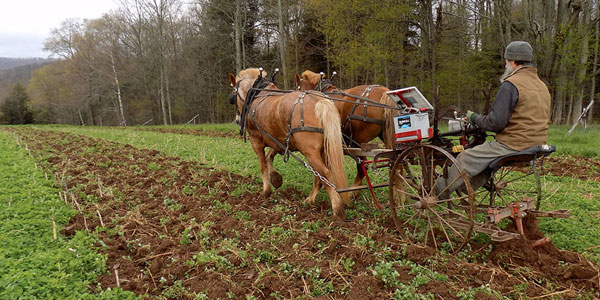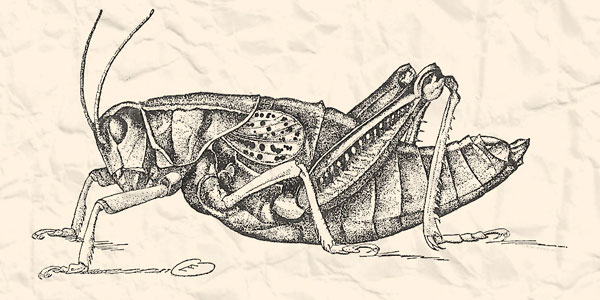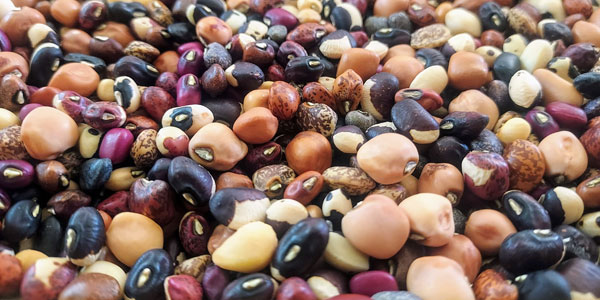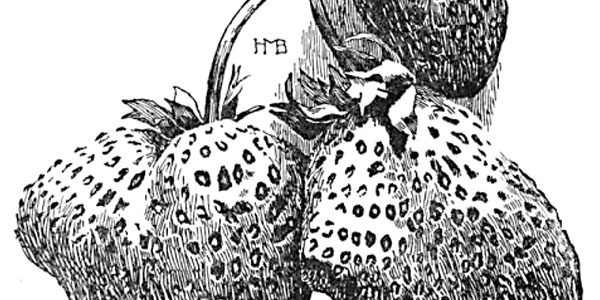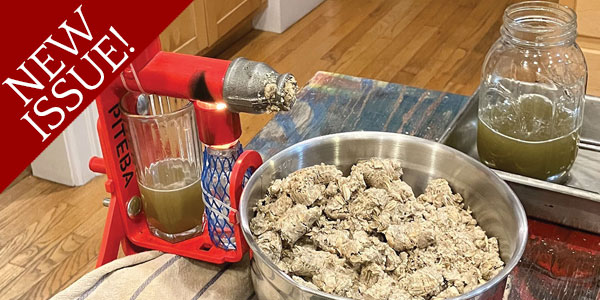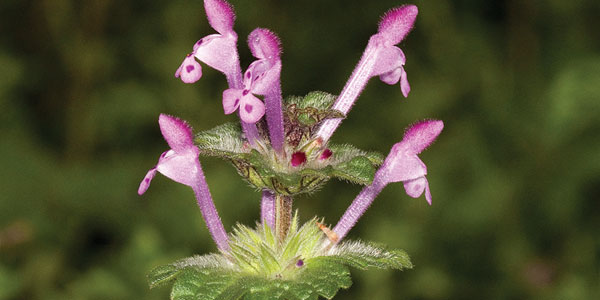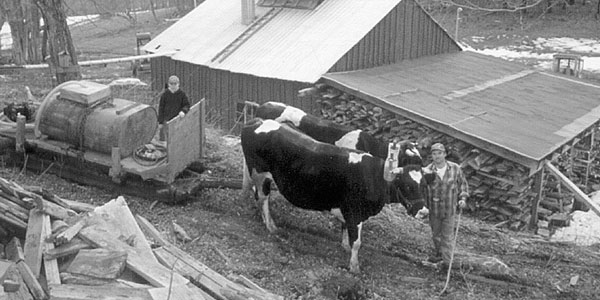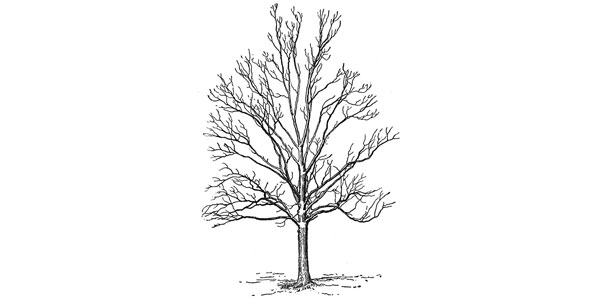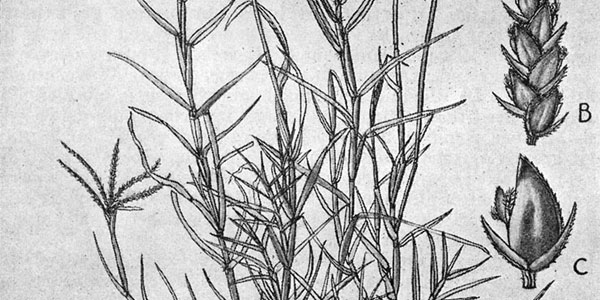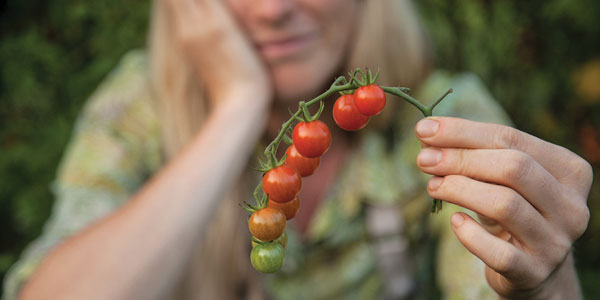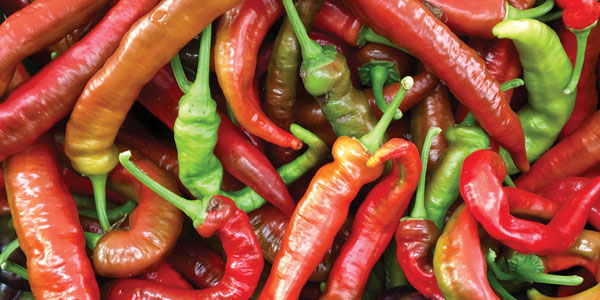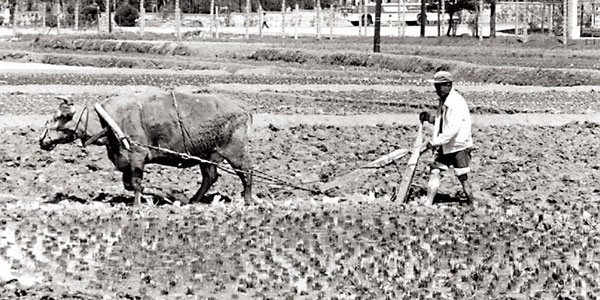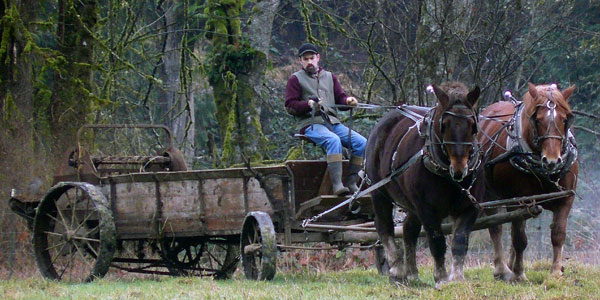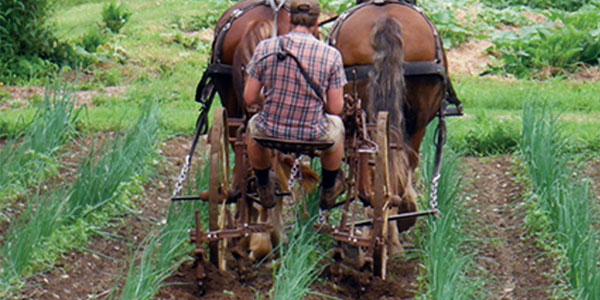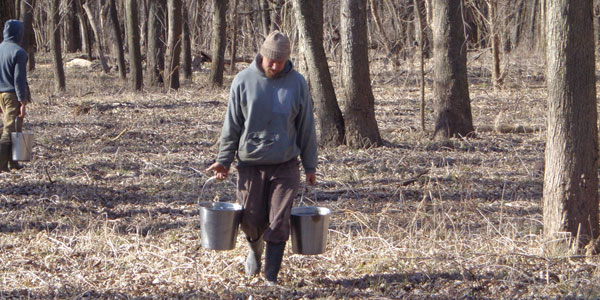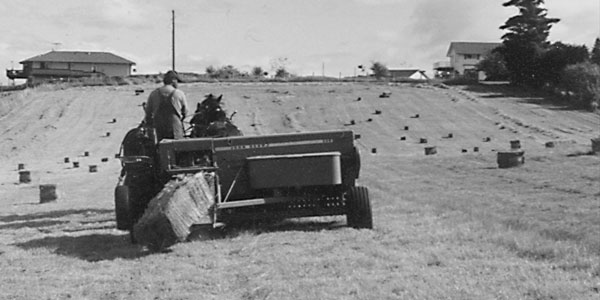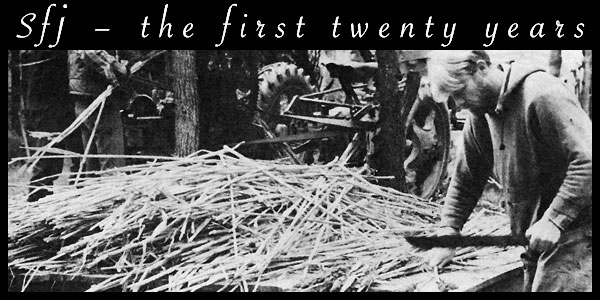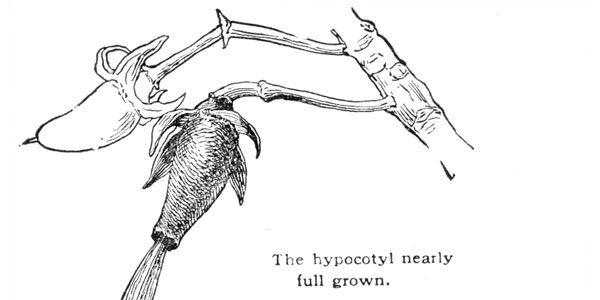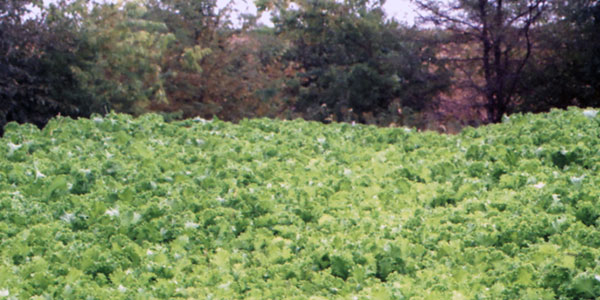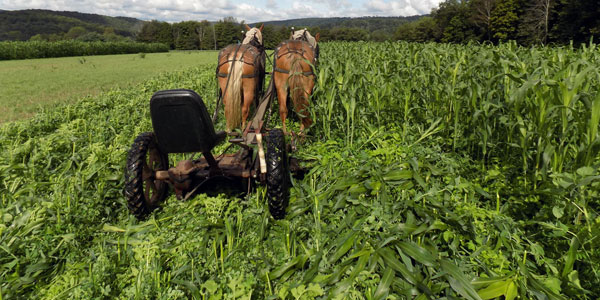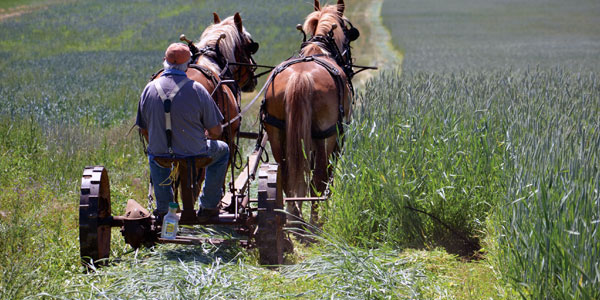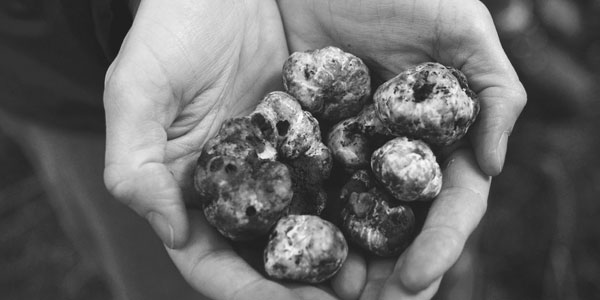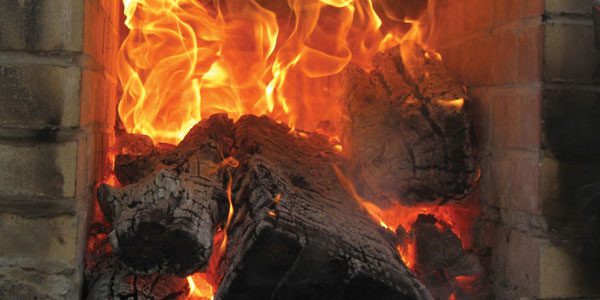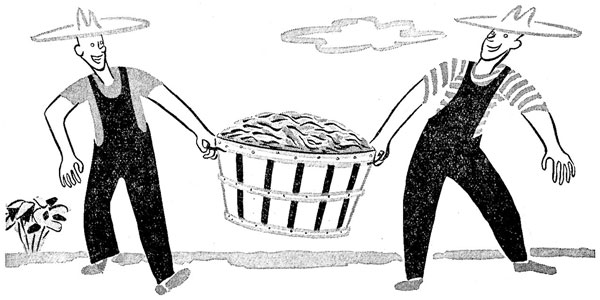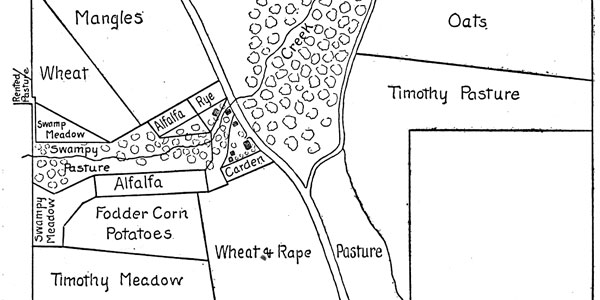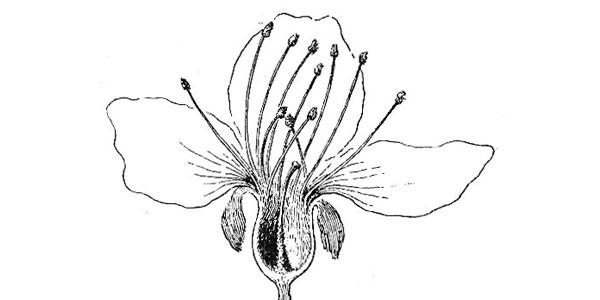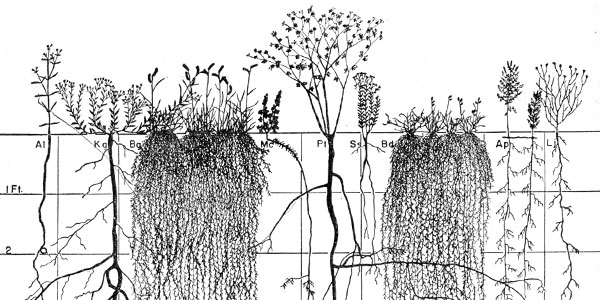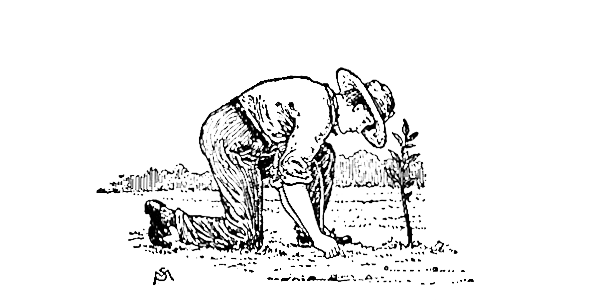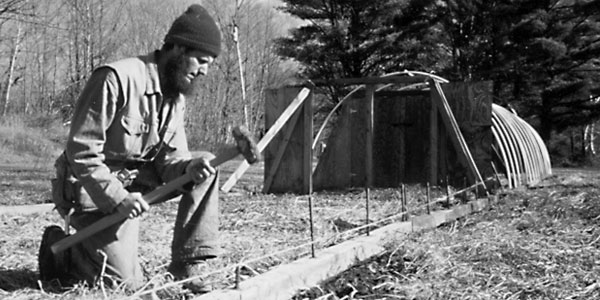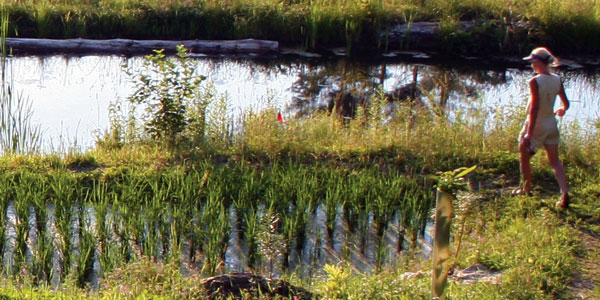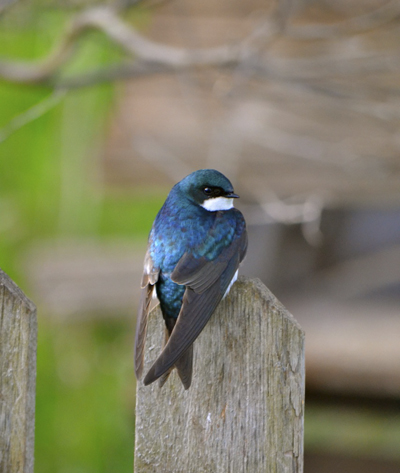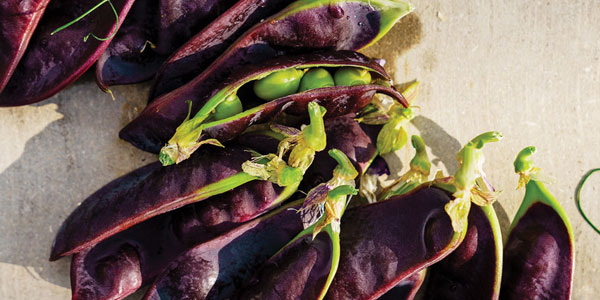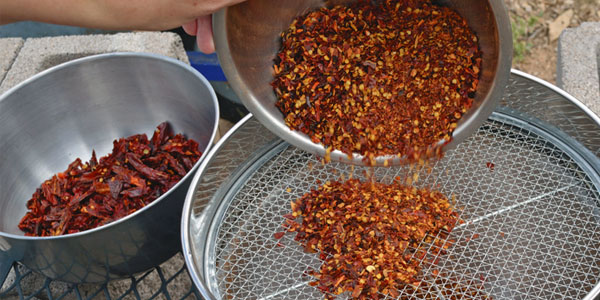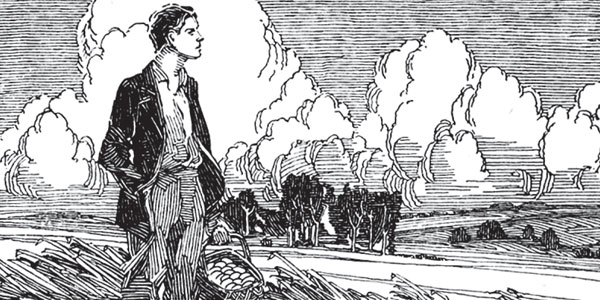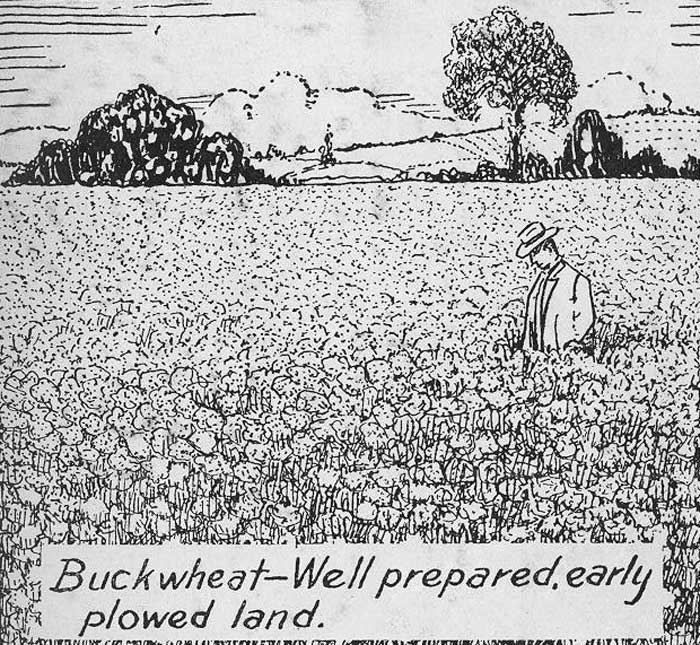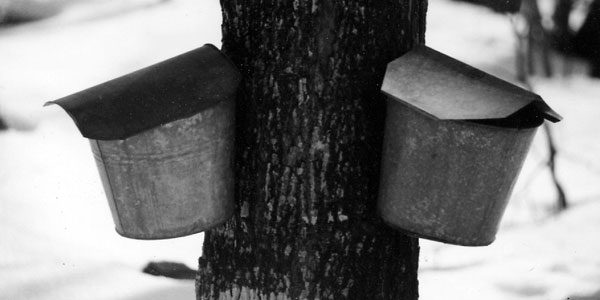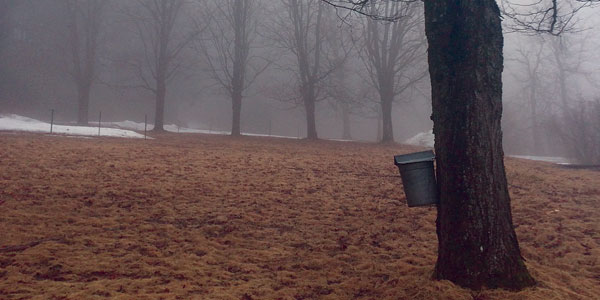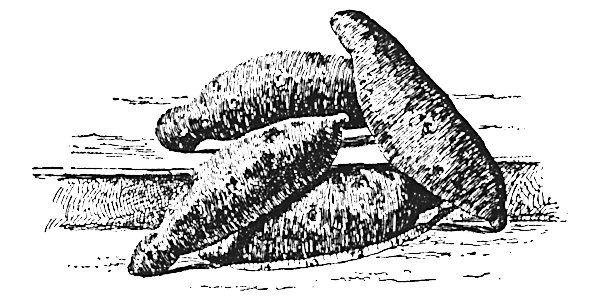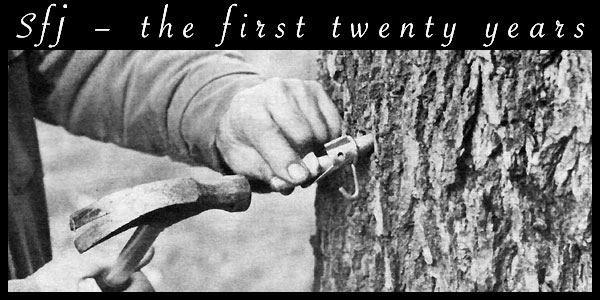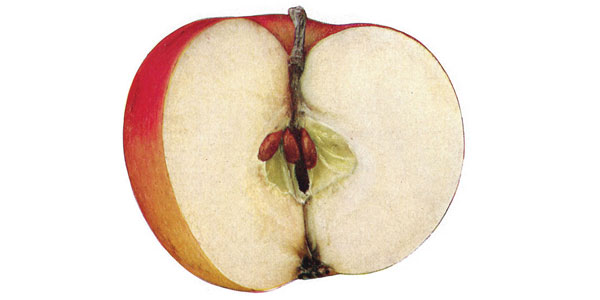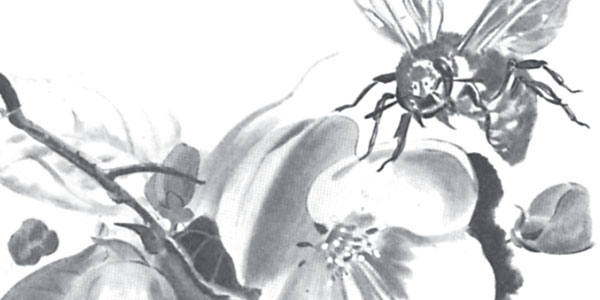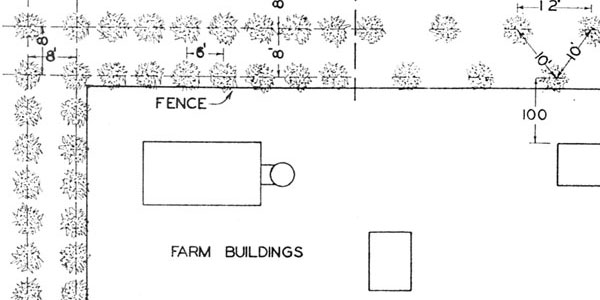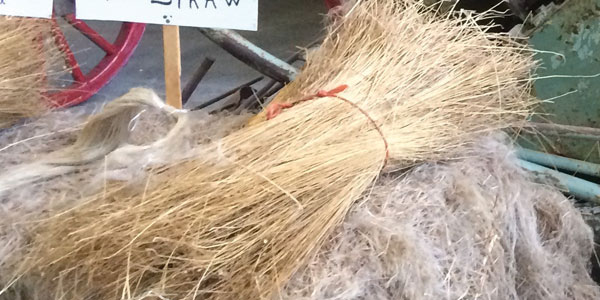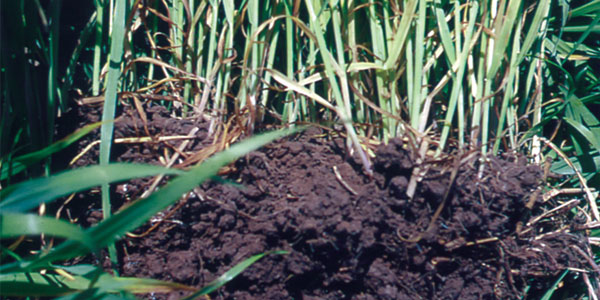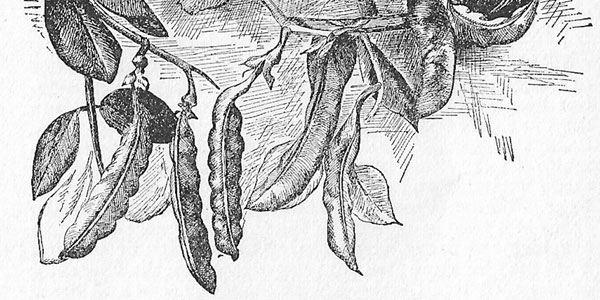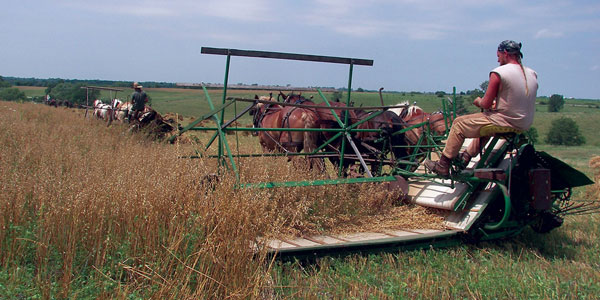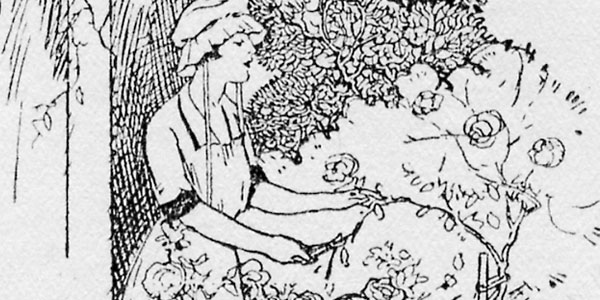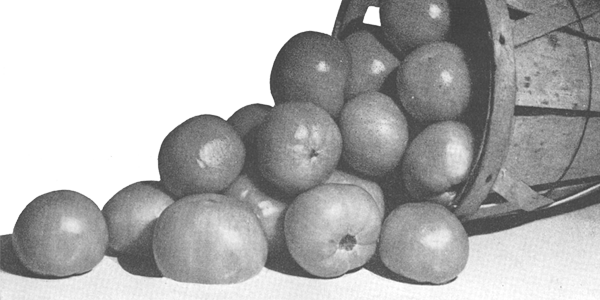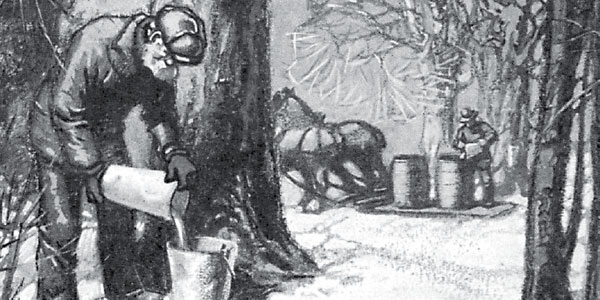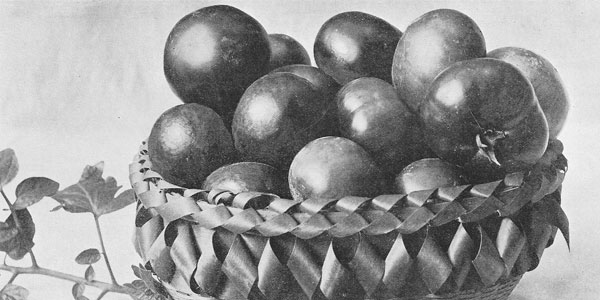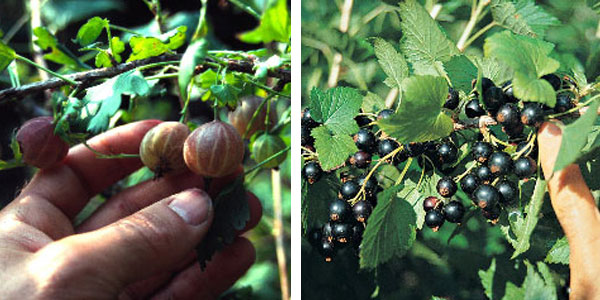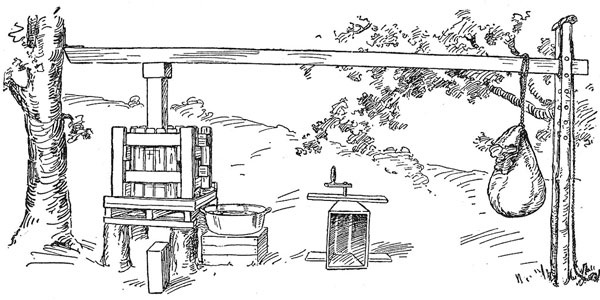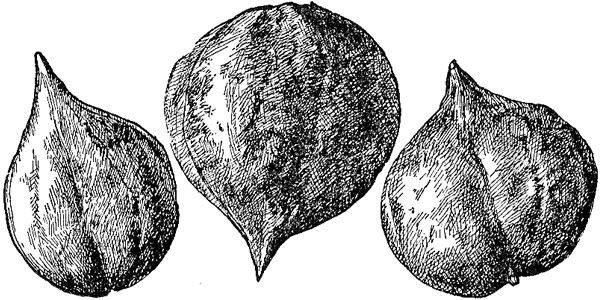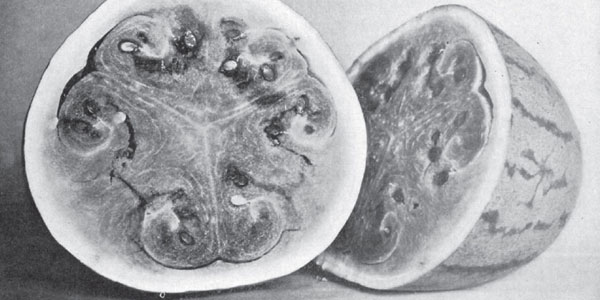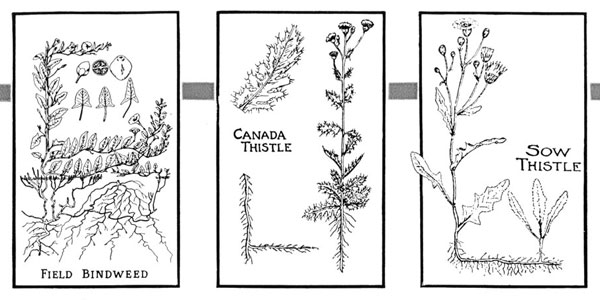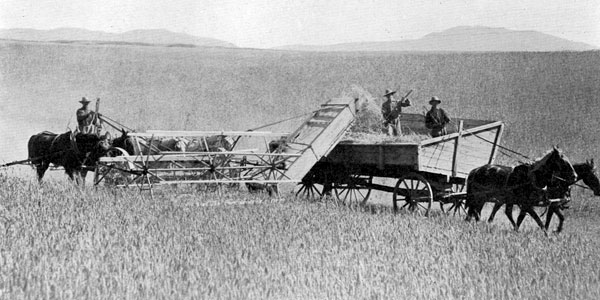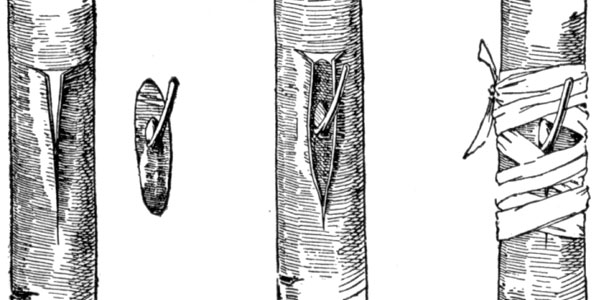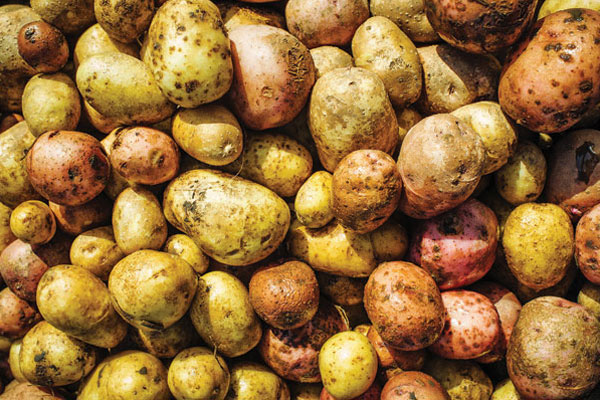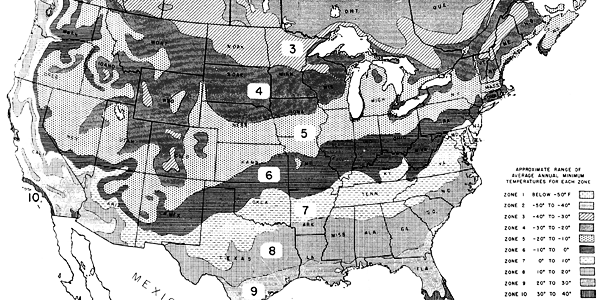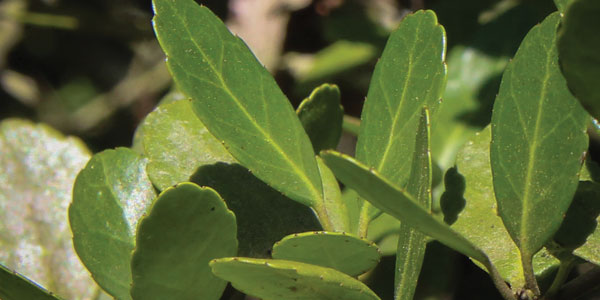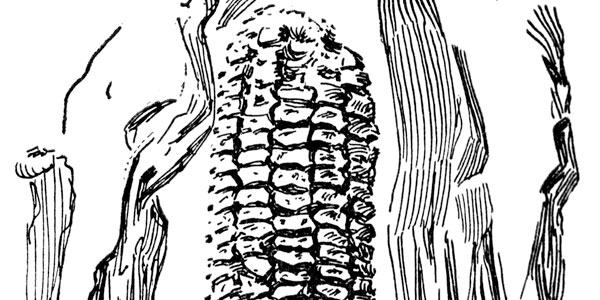Crops & Soil
6 Mistakes to Avoid When Planting Garlic
Garlic is one of the easiest and most rewarding crops to grow, though often deceptively simple. I’ve grown garlic here in the Finger Lakes of New York since I was a child in my father’s garden and am honored to share the keys to surrounding yourself with abundance.
A Beet Story
The beets that prompted this story grabbed my attention because they had been bred with flavor in mind. Specifically, these beets had been selected to be either very high or very low in geosmin, the simple twelve-carbon molecule that gives soil its distinctive earthy aroma. It’s long been known that beets have an earthy character; some people call them “dirt candy” while others say they just taste like dirt. Of the flavor components identified in beets, earthiness is the one that people most often dislike, so my doctoral advisor, Dr. Irwin Goldman, had wondered: If we bred a beet with less geosmin, would more people like it?
A Critique of Genetically Engineered Crops
Although corn pollen is comparatively heavy, the wind can carry it several hundred yards. That is, pollen from corn in one farm can easily pollinate corn in a nearby field. When the pollen comes from Roundup Ready corn, Bt corn or another GE variety it can contaminate a traditional variety. The organic farmer cannot market his or her corn as organic if GE corn has pollinated it. In the guise of intellectual property rights, Monsanto, which holds the patent to many GE varieties, has sued farmers whose corn has been contaminated on the principle that they did not buy the contaminating variety and so had no right to its pollen, even though the farmers did not want this contamination…
A Group of Cacti
Even after duplicate names are sorted out, Mammillaria is the largest of several genera of diminutive cacti with about 175 species worldwide. The Sonoran Desert species are less than 6 inches (15 cm) tall, with closely-spaced areoles bearing many spines that obscure the body of the plant. The areoles are at the tips of long tubercles that are arranged in 2 spirals (one clockwise, the other counterclockwise). These tuberculate stems contrast with the ribbed stems of the genus Echinocereus. In addition, many mammillarias have hooked central spines, whereas no hedgehog does.
A Mania for Potato Flowers
I have grown potatoes in my garden for many years and agree with the French: the flowers are gorgeous. They may be white, pink, red, blue and purple. I favor Yukon Gold, which produces purple flowers with brilliant yellow anthers and stigmas. Perhaps I am biased, but I don’t think any other flower is so beautiful.
A Potato Story
In our region, which is highly urbanized and industrialized, many basic connections with regard to food production have literally been lost. Many people no longer know where their food comes from and the majority of the food produced in the small town of Lorsch is not consumed there. It is produced for the “global market” and does not find any added value in the community itself. This goes along with the fact that the regional and local infrastructure has gradually collapsed. There is a lack of local processing facilities for food: often products have to be transported many kilometres before they can be processed at all.
A Varietal Comparison of Productivity in the Sweet Potato
In 2012 a comparative yield trial involving 38 cultivated varieties of sweet potatoes (Ipomoea batatas) was conducted by Edmund O. Brown II and Pamela Jean Brown at two locations on their farm, known as New Hope Farms in eastern Jasper County, Missouri. The following is a description of the trial, and of which clonal varieties were found by Mr. and Mrs. Brown to yield better and worse.
Alfalfa and Alfalfa Seed Production on the Small Farm
The need for alfalfa (or other legume hay) becomes obvious to any farmer who is intent on lowering his input costs while maintaining maximum production from his land and livestock. Yet often overlooked is the opportunity to produce a valuable seed crop as an alternative cash crop. Production of alfalfa for forage and for seed go hand in hand and is easily accomplished on the small farm.
An Introduction Into Plant Polyculture
An excerpt from What’s Wrong With My Fruit Garden
Companion Planting for Beginners
An Introduction To Farm Woodlands
The farm woodland is that portion of the farm which either never was cleared for tillage or pasture, or was later given back to woods growth. Thus it occupies land that never was considered suitable, or later proved unsuitable, for farm enterprises.
Another Set of Promising New Fruits
The original bush of this very promising new raspberry appears to have been found by Mr. Ulysses Eaton at Cambridge City, Indiana, as a chance seedling in his berry field in 1885. He propagated this and planted it for his local market. In 1898 accounts of the large size and fine quality of its fruit reached Mr. Amos Garretson, who visited the discoverer and, being impressed with the value of the variety, secured some plants of it from Mr. Eaton for testing at his home at Pendleton, Indiana.
Antique Apples
These antique plates were gifted to SFJ by our outstanding friend, Bill Reynolds.
Antique Hand-Tinted Vegetable Art
Antique Hand-Tinted Vegetable Art
Apple Cider and Its Preservation
A considerable quantity of malic and tannic acids are present in all apples. It is these that give the apples and juice the tart taste. It might be thought that the sweeter varieties are sweet on account of a greater amount of sugar, but this is not the case. Apples are sweet or sour depending on the amount of acids present. The color of the cider depends upon tannic acid. If the pulp be exposed to the air from twelve to twenty-four hours before pressing a darker color of the cider results. The action of the tannic acid together with the air causes darkening. Also, part of the cloudiness of cider is due to albuminous matter; tannic acid assists in precipitating this out and making it settle. Hence a juice high in this acid will be of a darker color and is more likely to be clear.
Apple Cider, Autumn’s Nectar
While autumn’s beauty is food for our souls, autumn’s harvest provides food for our tables. Along with the many hours and days of canning and freezing our garden produce, harvest time also means apple cider making for our family. We have been making apple cider, or sweet cider as it is commonly called, for six years. Beginning slowly, the demand for our juice has resulted in a production of over six hundred gallons this year.
As Lovely as a Tree
The choice of what trees to plant, as well as how many and where, will depend on what your objectives and interests are. Broadly speaking, tree plantings may be divided into five categories: forests, orchards, windbreaks, wildlife habitat, and shade. While each type of planting may be different from the rest, there is often a great deal of overlap between them, so one planting may serve several purposes.
Asparagus in Holland
The asparagus culture in Holland is for the majority white asparagus, grown in ridges. This piece of land used to be the headland of the field. The soil was therefore compact, and a big tractor came with a spader, loosening the soil. After that I used the horse for the lighter harrowing and scuffle work to prevent soil compaction. This land lies high for Dutch standards and has a low ground water level, that is why asparagus can grow there, which can root 3 foot deep over the years.
Bamboo: A Multipurpose Agroforestry Crop
The bamboos are gaining increased attention as an alternative crop with multiple uses and benefits: 1) domestic use around the farm (e.g., vegetable stakes, trellis poles, shade laths); 2) commercial production for use in construction, food, and the arts (e.g., concrete reinforcement, fishing poles, furniture, crafts, edible bamboo shoots, musical instruments); and 3) ornamental, landscape, and conservation uses (e.g., specimen plants, screens, hedges, riparian buffer zone).
Barnyard Manure
The amount of manure produced must be considered in planning a cropping system for a farm. If one wishes to manure one-fifth of the land every year with 10 tons per acre, there would have to be provided two tons per year for each acre of the farm. This would require about one cow or horse, or equivalent, for each six acres of land.
Beating the Beetles – War & Peace in a Houston Garden
Blooming that is, unless the cucumber beetles arrive first.
And arrive they have … “At first I thought they looked like big, yellow lady bugs.” Paul said, “Then I looked…
Beautiful Grasses
What follow are a series of magnificent hundred-year old botanist’s watercolors depicting several useful grass varieties. Artworks such as this are found on the pages of Small Farmer’s Journal quite regularly and may be part of the reason that the small farm world considers this unusual magazine to be one of the world’s periodical gold standards.
Black Walnut: The Multi-Purpose All American Tree
The Persian, often called English walnut, had been brought to Europe during Medieval times by traders from south central Asia. Its value as a nut and furniture wood crop was well known throughout the Old World by colonial times. Early Americans soon realized that the native American black walnut was just a bit different from its Eurasian relative. First of all, the New World tree grew bigger than its cousin. Secondly, its nut meat, while equally edible and nutritious, was stronger tasting. Thirdly, unlike the relatively easy to crack shell of the Persian walnut, the American’s shell was extremely hard, difficult to smash.
Blackberry
The first Blackberry introduced into cultivation was the Dorchester, which was exhibited before the Massachusetts Horticultural Society in 1841. This was followed by the Lawton a few years later, which became much more prominent. The Kittatinny soon divided honors with this, and both now largely have given place to the Snyder, which is undoubtedly the most widely grown variety of the present day. The rapid strides made by the Blackberry in cultivation prove that a place was ready and waiting for it in the pomological world, owing both to its desirable qualities in general and to its ability to rapidly vary and develop new types. At the present time (1902) it is one of the most important, most generally liked and most profitable bush-fruits grown.
Blister Beetles
Blister beetles occasionally cause localized areas of damage within soybean and alfalfa fields. However, the significance of damage to these crops is questionable. This is because the gregarious nature of the more commonly occurring blister beetles limits the area attacked and because soybean and alfalfa plants can compensate for substantial foliar losses. It is in this area that blister beetles may become a major concern. The bodies of blister beetles contain a substance called cantharadin. This chemical is an irritant capable of causing the formation of blisters upon those body tissues exposed to the chemical. Livestock may come into contact with blister beetles via the consumption of alfalfa hay containing dead beetles.
Brassica
The Brassicas have received too little attention from botanists. The inevitable outcome of such neglect or of any superficial study is a reduction of species, and in this direction Brassica has suffered greatly. The most perplexing species in our manuals are those which contain the greatest number of old types or synonymous names. It is true that this is supposed to be primarily due to the variation of the species or groups, but it is often to be charged to superficial study or insufficient material. Our manuals contain too few rather than too many species of Brassica; at all events, the miscellaneous dumping of rutabagas, turnips, rape and other plants into Brassica campestris is unnatural, and, therefore, unfortunate.
Bridge Grafting and Inarching Damaged Fruit Trees
Girdling of fruit trees may be caused by rodents, sun-scald, winter injury, disease, or mechanical injuries such as those resulting from cultivating. If girdling is not repaired, the damaged trees die. Girdling is the result of destruction of the bark and living tissue that connect the roots of a tree with the part that is above the injury. Repair consists of reestablishing the connection. Girdled trees often can be saved by bridge grafting or by inarching. To be successful, either type of repair must be made soon after injury. If girdling injury is entirely above ground or if it has not seriously damaged the main roots, it can be repaired by bridge grafting. If the roots are damaged so badly that pieces cannot be grafted on them, the trees must be repaired by inarching.
Cabbage
Cabbage is the most important vegetable commercially of the cole crops, which include cabbage, cauliflower, Brussels sprouts, kale, kohlrabi, collard, broccoli, and many others. It also ranks as one of the most important of all vegetable crops and is universally cultivated as a garden, truck and general farm crop. The market for cabbage, like that for potatoes, is continuous throughout the year, and this tends to make it one of the staple vegetables.
Cabbage Re-Imagined:
Plant breeding is, as Irwin Goldman observes, the slowest of the performing arts and this is particularly true for biennials like cabbage, who have evolved to set seed in their second growing season. In the autumn of 2016, as we embarked on crossing a purple cone-headed cabbage with a green one, we dug the roots and be-headed the stalks of about 100 cabbages. After overwintering in our root cellar, we re-planted each stalk in spring and if you’ve never seen cabbage go to seed, it’s quite astonishing. Each darling cabbage down at your feet sprouts a dozen or so spires rising five feet or higher, bursting into hundreds of blooms, canary yellow and cabbage-y sweet. Pollinators flock to the ruckus with long, green pods emerging from each pollinated flower. The sea of green pods turn to gold as the seed matures and we harvest them just as the first pods begin to shatter.
Cane Grinding: An Age-Old Georgia Tradition
Most sugar cane is processed in refineries to give us molasses, brown sugar, and various kinds of white sugar. However, some South Georgia farms that raise sugar cane still process it the old way to produce the special tasting sweetener for their own food. One such farm is the Rocking R Ranch in Kibbee, Georgia. It is owned by Charles and Patricia Roberts and their sons. The process they use has not changed in the past 100 years. This is how it is done.
Carrots & Beets – The Roots of Our Garden
Carrots and beets are some of the vegetables that are easy to kill with kindness. They’re little gluttons for space and nutrients, and must be handled with an iron fist to make them grow straight and strong. Give the buggers no slack at all! Your motto should be – “If in doubt, yank it out!” I pinch out a finger full (maybe 3/4” wide) and skip a finger width. Pinch and skip, pinch and skip, working with existing gaps and rooting out particularly thick clumps.
Charcoal
Care should be taken that the charcoal be well pulverized, for it has been ascertained that during the process of burning the wood to get it, the openings of the pores become closed by a vitreous matter – probably caused by the fire melting the silicate of potash – and thus deprive it of the power of absorbing gases. By crushing it other openings are made, which unless the charcoal is again subjected to fire, will not become closed.
Cherries 1903
Cultivated tree Cherries have probably sprung from two European species, Prunus Avium and Prunus Cerasus. The domesticated forms of Prunus Avium are characterized by a tall, erect growth; reddish brown glossy bark, which separates in rings; flowers generally in clusters on lateral spurs, appearing with the limp, gradually taper-pointed leaves; fruit red, yellow, or black, generally sweet, spherical, heart-shaped, or pointed; flesh soft or firm. Sour Cherries are low-headed and spreading; flowers in clusters from lateral buds, appearing before the hard, stiff, rather abruptly pointed light or grayish green leaves.
Color as an Indication of Picking Maturity
Fruit color is a factor intimately associated with fruit maturity. The small child uninstructed in the arts is not attracted to the cherry tree until the fruits are colored, and he soon learns from experience to choose the fruits that are sweetest by his sense of color values associated with the perception of taste.
Critters in the North Country Woodlot
Your thoughts on the use of a forest may differ from what the wild animals in it are thinking, and it is good to be aware of the problems. Animal browse is of two kinds. Critters may eat the buds, foliage, twigs, and leaders, which are accessible only on young trees. Or, they may gnaw the bark of both old and young trees. Foliage and leader browse may change the composition of a young forest, but the trees eventually outgrow the problem. Bark browse is a problem for many years more, though some trees are not affected because their bark is not appetizing.
Crops for Those “Unfarmable” Spaces
Whether located in a suburban setting, or a rural one with limited available acreage, small farmers are always facing a perennial problem – not enough room. However, right under a small farmer’s nose, on almost every city lot or nook and cranny of an oddly shaped rural parcel, there’s a home for some fruit or vegetable. Maybe that sliver of ground is only a few square feet, has limited sun, is in a ditch or against a wall or fence, but some certain garden plant or animal would love to call it home.
Cucumber
Cucumbers will thrive in any good soil not extremely heavy nor sandy. Good corn or wheat land, if in gardening condition with respect to tilth and drainage, will answer. Or for the earliest crop, a situation with a more pronouncedly sandy soil may serve best. In most parts of America the field crop of Cucumbers may be grown from seed planted in the open ground after danger of frost is past. Put 6 to 12 seeds in the hill, the hills being 4 by 6 feet apart.
Cultivating Questions: A Bio-Extensive Demonstration
Two management directives led us to a bio-extensive design. First, because our staff is small, we required a system that would provide inherently good weed control. Bermuda grass was a particular concern. Our second directive demanded a reduced dependence on outside fertility inputs, particularly industrial poultry litter. Many, if not most, of the organic market farms in our region depend on broiler or layer litter for annual supplies of nitrogen and organic matter. We wanted an alternative that would be more independent and sustainable.
Cultivating Questions: Alternative Tillage & Inter-Seeding Techniques
Our intention is not to advocate the oddball living mulches we use with this single row inter-seeding system, but just to show how it is possible to utilize the between-row areas to improve insect habitat, reduce erosion, conserve moisture, fix some nitrogen, and grow a good bit of extra organic matter. If nothing else, experimenting with these alternative practices continues to keep farming exciting as we begin our twentieth season of bio-extensive market gardening.
Cultivating Questions: Annual Cover Crops versus a Longterm Sod
We think there are at least two distinct reasons that a long-term sod can improve soil quality without additions of off-farm organic matter. First, the constant growth and dying off of a large perennial root system adds organic matter to the soil on a continuous basis. Secondly, the combination of permanent ground cover and undisturbed soil protects this slow-but-steady accumulation of humus from oxidation. No wonder that perennial grass-legumes mixes have played an essential role in traditional farm systems.
Cultivating Questions: Canada Thistle
According to Walter Conrad Muenscher’s 1935 classic handbook, Weeds, “The Canada thistle is one of the most feared weeds in the United States.” Judging from the number of desperate requests we have received on how to deal with this prickly perennial, Canada thistle still strikes terror in the hearts of innocent farmers across the country.
Cultivating Questions: Compost
How much compost to use for growing produce may be a more pressing question for many growers than the timing of application. Soil testing, crop recommendations, nutrient budgeting and field observations are some of the common methods for determining compost rates. Although we have used all of these tools over the years, our guiding principle has been kind of arbitrary: we use the manure produced by our work animals. With three to four horses for 3 ½ acres of vegetables, that comes to one horse per acre and a current application rate of 5-6 tons/acre.
Cultivating Questions: Concerning the Bioextensive Market Garden
One of our goals when we first started farming here was to develop the farm as a self-contained nutrient system. Unlike the almost complete recycling of nutrients which can take place on a livestock operation, we are always amazed – even a little disturbed – to see how many tons of fertility and organic matter leave the market garden each year with so little returned to the good earth.
Cultivating Questions: Counting Beans While Preserving the Grace
Although we were excited about being involved in this comprehensive research project, we must admit we had mixed feelings about doing the NEON enterprise budgets right from the start. Our reluctance was not due to going public with the numbers, but because economics has never been a driving force behind the goal setting and decision making we use on our farm. Right livelihood has always been a higher priority than profit. Consequently, most of our management practices have been based on what seems right for the land, for the animals, for our customer, ourselves, and the larger society – realizing all along that, being human, we will never get it absolutely right.
Cultivating Questions: Diary of a Minimum-Till Horse Farmer
Wednesday, April 16 – With the help from a friend who made the mistake of volunteering to help out this morning, we cut up 350 lbs. of seed potatoes and then handplanted the early crop of Dark Red Norlands, Kennebecs and Carolas in seven rows along the north side of field 6. This was the first time we had tried ridge-tilling potatoes and it worked slick, using basically the same procedure as we used for ridge-tilling the peas except making the planting furrow deeper.
Cultivating Questions: Evolution of a Permanent Bed System
After three or four years we could see that the nature of our farming practices would continue to have detrimental effects on our soils. We were looking for a new approach, a routine that would be sustainable, rather than a rescue treatment for an ongoing problem. We decided to convert our fields to permanent planting beds with grassy strips in between where all tractor, foot and irrigation pipe traffic would be concentrated.
Cultivating Questions: Farm Tour Follow-Up
In this column we finish cultivating a selection of questions from the 2012 farm tours. We also respond to a question from a group of forty extension agents who toured the bio-extensive market garden in 2010. We thought their concern about managing horse manure in the vegetable fields was timely to address given the recent release of the FDA’s proposed Produce Safety Rule.
Cultivating Questions: Farm Tour Queries
The first year we plowed up four acres of the old hayfields (corresponding to fields 1-8 on the map) and planted oats for the work horses. We also put out about a quarter-acre of medicinal herbs and vegetables to see what would grow well in our area. Digging quackgrass out of these trial crops on our hands and knees convinced us that we needed to use the summer fallow to deal with this perennial weed before committing to a larger acreage of produce.
Cultivating Questions: Farmers of Forty Centuries
Recently I saw a book called “40 Centuries.” It was a history of rice farming in the Far East. It showed that due to the nitrogen fixing effects of a certain kind of algae that some rice paddies had actually increased in productivity after 4,000 years of more-or-less continuous cultivation. So, here’s my question. Do you think any form of tillage agriculture, even shallow tillage, is capable of sustainable use over that sort of time frame and without any trucked in inputs?
Cultivating Questions: Follow-Up On Phosphorus
We like to think that the bio-extensive approach to market gardening minimizes the risk of overloading the soil with nutrients because the fallow lands make it possible to grow lots of cover crops to maintain soil structure and organic matter rather than relying on large quantities of manure and compost. However, we are now seeing the consequences of ignoring our own farm philosophy when we resorted to off-farm inputs to correct a phosphate deficiency.
Cultivating Questions: Grassfed Potatoes
Typically, we skimplow an overwintering cover crop of rye and vetch the beginning of April in preparation for this planting window. Shallowly undercutting the live cover crop at that time of year prevents the rye and vetch from removing the winter accumulation of moisture from the ground and preserves the soil structure created by the cover crop by leaving most of its root system intact.
Cultivating Questions: Grow-Your-Own Mulch Part 1
For the past 25 growing seasons, we have used the dryland practices described in this article to direct seed and transplant vegetables all season long without irrigation. Of course, rainfall has been necessary to finish out some of our longer term crops, and yields have generally been better in wet weather. Nevertheless, we consistently get good stands of produce without precipitation or watering in the plants, and our income from dryland fruits and vegetables has increased every year without expanding acreage. Although not a substitute for irrigation, the following moisture preserving ideas may possibly be helpful to growers making do with limited access to water or simply desiring to reduce the size of their hydrological footprint.
Cultivating Questions: Grow-Your-Own Mulch Part 2
In the Summer 2008 SFJ we reported on our initial experiment using the fallow field cover crops to generate enough mulch materials for a 380’ row of un-irrigated winter squash. Encouraged by the excellent crop growth and yield despite the dry, hot conditions of 2007, we repeated the experiment the following years, trying to determine the optimum ratio of land in straw producing cover crops to cash crop area. In 2009, we finally got it right: we seeded a 36’ wide strip of rye and medium red clover in September of 2008, then, in April, 2009, we skim plowed a 12’ wide area in the middle of the overwintering cover crops for planting the winter squash.
Cultivating Questions: Grow-Your-Own Mulch Part 3
To weatherproof more of the market garden in 2011, we tried a variation on the grow-your-own mulch system we developed for producing winter squash in the fallow fields. We discovered it was possible to mulch row crops like tomatoes, peppers, carrots, onions and leeks by moving windrows of rye into the pathways. Although awkward to handle at first, we soon got the hang of picking up an 8-10’ length of twisted rye straw in our arms and walking it from the fallow lands into the adjacent vegetable field.
Cultivating Questions: Grow-Your-Own Mulch Part 4
We have relied exclusively on rye for the grow-your-own mulch experiment because it is such a perfect match for many of our spring and summer vegetables. Established in early-to-mid September at our northern Pennsylvania location, rye produces a prodigious amount of biomass by the end of the following May. Mowing the rye at this time eliminates the possibility of volunteer grain. And raking the conveniently grown straw next to the adjacent vegetables a week or two later coincides nicely with the soil temperature and moisture requirements of tomatoes, peppers, zucchini, onions, leeks and winter squash. This year we branched out a little, trialing different cover crops for other growing windows.
Cultivating Questions: High-Value Cover Cropping
Our winter workshops seem to generate a lot of interest in bioextensive market gardening among young growers. However, we sense an undercurrent of frustration because many of the participants do not have access to enough land to fallow half of the market garden. We hope that the following list of speculative suggestions will provide some encouragement to new vegetable farmers who cannot afford to take land out of production but want to take advantage of the bioextensive principles of rotational cover cropping, minimum-depth tillage, and bare fallowing.
Cultivating Questions: Horsedrawn No-Till Garlic
We were inspired to try no-tilling vegetables into cover crops after attending the Groffs’ field day in 1996. No-tilling warm season vegetables has proved problematic at our site due to the mulch of cover crop residues keeping the soil too cool and attracting slugs. We thought that no-tilling garlic into this cover crop of oats and Canadian field peas might be the ticket as garlic seems to appreciate being mulched.
Cultivating Questions: Managing Clay Soils
The structural management of a clay soil is not such a simple problem as that of sandy one. In clays and similar soils of temperate regions the potential plasticity and cohesion are always high because of the presence of large amounts of colloidal clay. When such a soil is tilled when wet, its pore space becomes much reduced, it becomes practically impervious to air and water, and it is said to be puddled. When a soil in this condition dries, it usually becomes hard and dense. The tillage of clay soils must be carefully timed. If plowed too wet, the structural aggregates are broken down, and an unfavorable structure results. On the other hand, if plowed too dry, great clods are turned up which are difficult to work into a good seedbed.
Cultivating Questions: No-Till Garlic
One reason the no-till garlic may have been able to produce such a massive root system was due to the undisturbed soil being riddled with earthworm holes. Not wanting to destroy the beautiful soil structure created by the earthworms, we prepared the harvested garlic patch for planting a cover crop by fencing in our small flocks of laying hens to shred-and-spread the mulch of wheat straw in the no-till pathways. The birds also lightly tilled all this moisture conserving organic matter into the surface of the soil so a pass or two with the springtooth harrow was all that was necessary before seeding the winter cover of rye.
Cultivating Questions: No-Till Vegetable System at Tobacco Road Farm
Over the last twenty plus years of intensive vegetable growing at Tobacco Road Farm in Lebanon, CT, we have constantly sought ways to improve the health and vitality of our crops and soils. Much of the land grows vegetable crops year round so the intensity of production demands very careful soil care. Over the last several years a system was developed on the farm which has proven to be quite successful. The various methods are still being fine tuned; but with a high level of success and it seems appropriate to share what has been done.
Cultivating Questions: No-till, No-herbicide Planting of Spring Vegetables Using Low Residue Winter-killed Cover Crops
from issue: 38-3
Ray Weil and Natalie Lounsbury’s pioneering work with forage radishes at the University of Maryland could provide a solution to the vegetable grower’s winter cover crop dilemma. When planted in August, forage radishes suppress winter weeds and scavenge left-over nitrogen keeping nutrients out of groundwater. Succulent radish tissue melts away quickly when the ground thaws leaving dark soil to absorb spring warmth and little residue to interfere with planting equipment. Quickly decomposing radishes might also release nitrogen when early vegetables need it.
Cultivating Questions: Preparing the Orchard Site
We plowed up a narrow contour strip wrapping around the south side of the market garden with the idea of eventually expanding production. Since the east end of this field seemed too steep and stony for vegetables, we decided that this site would be more suitable for a small orchard. Although we had no experience managing fruit trees, we were inspired to plant enough apples to meet our own needs after seeing Soil Conservation photos from the 1930’s which indicated a well established orchard on this same sidehill site.
Cultivating Questions: Ridge-till Retrospective
Originally developed in the Midwest as an alternative to chemical no-till which aided soil warming and mechanical weed control, we adapted ridge-tillage to horsedrawn market garden production by attaching the rough equivalent of a ridge-till sweep to the middle of the riding cultivator. We initially used a cast-off roto-tiller middle buster found on the farm, then upgraded to a heavier duty customized 12” sweep, and finally settled on a 10” furrower purchased from Agri-Supply.
Cultivating Questions: Ridge-Till Revisited
Delay ridge building until early fall so that the cover crop on the ridge does not grow more than 12” tall before winter. The residues from a short cover crop will be much less challenging to cultivate than a tall stand of oats, especially if tangly field peas are mixed in. Waiting for the winterkilled cover crop residues to breakdown as long as possible before ridge-tilling in the spring will also make cultivation much easier until you gain familiarity with the system.
Cultivating Questions: Rotational Cover Cropping in the Small Fruit Orchard
Cane fruit are among the most moisture demanding crops in the market garden. So, if irrigation is not available, it is essential that the cover crops grown between the rows do not compete with the berries for moisture. For example, a cover crop of oats and Canadian field peas planted right after the harvest of summer bearing raspberries would not compete with the cane fruit during the main growth and fruiting period.
Cultivating Questions: The Costs of Farming With Horses vs. Tractors
A couple of questions at this year’s small group tour made us realize that we had not thoroughly cultivated the topic of work horse costs in this column. Tom Padua, recently hired to manage a CSA in New Jersey and convert it to the bio-extensive system, wanted to know how much hay, grain and minerals we feed our work horses. Miriam Gieske, a research intern at the Rodale Institute, took Tom’s questions to the next level. After browsing through the SFJ handouts at the end of the day, she wanted to know which costs more, farming with horses or tractors?
Cultivating Questions: The Organic Cropping Systems Experiment at Cornell
This long-term cropping systems project is a collaborative effort between researchers, extension and farmers. Funded by the USDA Organic Agriculture Research and Extension Initiative, it explores the essential premise of organic farming, namely, the connection between healthy soil and healthy crops. Specifically, the Organic Cropping Systems (OCS) program, which includes long-term organic grain and vegetable experiments, tries to evaluate how varying intensities of cropping, cover cropping, tillage and compost affects soil quality, nutrient levels, insects, weeds, disease, yields and profitability.
Cultivating Questions: the Well-Being of Small Farmers
The Gregson’s question about sustaining the health and well-being of farmers kind of hit home as I had to learn how to contend with a chronic digestive disorder when we first started farming here. While this minor handicap definitely limited our farming efforts, it also helped us to plan some slack into our operation right from the beginning. It forced us to focus our energy where it would be most effective and encouraged us to rely more on observation and management than muscle to get the job done – lessons we might not have otherwise learned until later in life. As a result, we may have been slower than most in bringing the market garden into full production, but our limitations, in a round about way, may have encouraged us to bring some biological efficiencies into play which have made the work easier and more rewarding in the long run.
Cultivating Questions: Weed the Soil Not the Crop
Many sustainable growers subscribe to the philosophy of “feed the soil, not the plant.” Our whole farm approach to weed management follows the same line of thinking – we call it, “weed the soil, not the crop.” Instead of relying on the cultivator or the hoe to save the crop from the weeds, we use cultural practices, including cover cropping, bare fallow periods, rotation and shallow tillage, to reduce the overall weed pressure in the soil. One result of this proactive strategy is we no longer depend on the cultivator or the hoe to grow certified organic produce. “Weeding the soil” has also enabled us to use reduced tillage and living mulches without compromising weed management.
Cultivating Questions: Winterkilled Cover Crops For A Mild Climate Part 1
Our mild climate makes it too easy to overwinter cover crops. Then the typically wet springs (and, on our farm, wet soils) let the cover put on loads of topgrowth before getting on the soil. Buckwheat is the only crop that I can be certain will winterkill. Field peas, oats, annual rye and crimson clover have all overwintered here. Any suggestions?
Cultivating Questions: Winterkilled Cover Crops For A Mild Climate Part 2
Finding just the right cover crop-tillage combination for crops planted the last half of June has always been a real challenge in our location. While surface-tilling mature rye and vetch in May works well for fall crops established in July and August, this cover crop-tillage combo does not allow enough time for decomposition and moisture accumulation for end-of-June plantings.
Don’t Judge a Carrot by its Cover
Selecting for flavor was immensely illuminating: without consistent selection, carrots bring forth their bitter ancestry. Tasting this legacy in all their pine-y, resinous intensity was eye-opening as well as tongue-tingling. At first, perhaps every one-in-eighty carrots would have a distinct and unmistakable pinesol-esque quality. With each generation, the proportion decreases. Still, with every generation and always, we are making flavor selections. And it’s paid off: within three generations, Dulcinea was significantly sweeter and more tender than Bolero both in summer and in storage.
Edible Flowers
We’ve been savoring the first forsythia blossoms in the Finger Lakes (yes, they’re edible!) And they inspired me to share our favorite edible flowers with you. (There are a lot!) Edible flowers are the best of all worlds, nourishing us in so many ways with their beauty, well beyond calories.
Eggplant
After the field has been thoroughly prepared in the way of plowing and fertilizing, which should have been done at least two weeks before the plants were set out, the rows should be laid off from 3 to 4 feet apart. The plants may be set from 2 to 4 feet apart in the row, varying with the varieties to be used and the soil. Tillage should be continued, and varied according to the conditions of the weather.
Erosion Controls part 1
It is a common conception that gully control means building check dams, planting trees, plugging gullies with brush, or directly applying to a gully some other individual control measure. This way of thinking focuses attention on devices that stop gullies rather than on ways of farming that prevent gully erosion. A broad, coordinated attack is in general necessary to keep gully erosion under control. A farmer who wishes to keep his fields free from gullies must give first consideration to proper land use and conservation farming on areas that contribute run-off to the gullies.
Erosion Controls part 2
Where necessary and practical, run-off should be diverted from a gully head before control measures are attempted within the gully. This principle generally applies to gullies of all sizes except those having so small a drainage area that the run-off is negligible, as for example, a gully with a drainage area of less than an acre. In using either terraces or diversion ditches careful consideration should be given to the disposal of the diverted water. If safe disposal cannot be provided, the water should not be diverted. The disposal of concentrated run-off over unprotected areas may cause gullying.
Erosion Controls part 3
Where temporary structures have been used to control gullies, it has been found that several low check dams are more desirable than one large dam of equivalent height. Low dams are less likely to fail, and after they silt up and rot away, the vegetation can protect low overfalls at these sites much easier than high ones. A temporary dam should seldom exceed 15 inches in overfall height, and an average effective height of about 10 to 12 inches will be better. By effective height is meant the vertical distance from the original gully bed to the spillway crest of the structure. It requires considerable field judgment to determine the most satisfactory location and spacing for temporary check dams.
Establishing Apples in the North Country
My apple orchard has only recently begun to bear fruit, but I have learned many things by the “school of hard knocks” which I wish I had known before. Perhaps these remarks may save some time and trouble for others thinking of setting out apple trees in a cold and demanding climate. Northwestern Maine, where I live, appears on the climate map as Zone 3, and area frost pockets even get down to -45 degrees F.
Even More Promising New Fruits
For many years there has been a strong tendency in the American fruit trade to urge that fruit growers reduce the number of varieties in their commercial plantations. When commercial fruit growing was developing out of the old-time family orchard, with its succession of varieties ripening throughout the season, such advice was undoubtedly good for the average individual planter, but there appears good ground for the belief that a point has been reached in several of our orchard fruits where a wider range of season and quality would result in a steadier net income from the fruit crop, and therefore in a sounder business condition in the fruit industry in many sections.
Everbearing Peach
A marked characteristic of this group is that certain individual trees have a long blossoming period and a correspondingly long season in which the fruit matures. It is this that gives special value to the “Everbearing,” a variety which originated about 1885 in the garden of a Mrs. Page, at Cuthbert, Ga. Blossoming, as it does, through a period of several weeks, it rarely fails to set a fair crop of fruit, while the fruit in turn ripens through a period of from six to twelve weeks on the same tree.
Farm Manure
Naturally there is great variation in manure according to the animals it is made by, the feeding and bedding material, and the manner in which it is kept. Different analyses naturally shows different results and the tables here given serve only as a guide or index to the various kinds. The manure heap, by the way, is no place for old tin cans, bottles, glass, and other similar waste material.
Farming by Moon Sign
Planetary influence in planting seeds
Farming by the Square Inch
The whole secret of the growth of these products before the regular season is in the cropping and the soil. Every inch of soil bears at least three crops a year, each of them anticipating the season and therefore producing fancy prices. The soil is regarded by the gardeners as of so much value that, as explained, there is a special clause in the lease that they are at liberty to cart it away to a depth of eighteen inches if they give up the farm at the termination of the agreement. The ground is so precious that no space is allowed for a wheelbarrow path. The loads are all carried in baskets and not a square inch is allowed to go to waste in this rich garden.
Fedco Trees & Plants for Spring Planting
Deep in the cultural trenches and personal histories within small farming is the oft shared love of seed catalog mining during fall and winter. We might say it is all about the enthusiasms that come with planning another year’s growing but I know it is also about a tangible immersion in the practical literature of planting choices. As many of you know already, with Fedco Seeds of Maine we have catalogs which are educational, testimonial, encouraging and genuinely bracing. And equally important we have all of that in a form that can and should be trusted and preserved. This is ‘our’ sort of seed company. Let’s go further ‘out on a proverbial limb’ and say their catalogs are our sort of reading material.
Field Beans
The field bean is one of the great food crops of the world. Very few other edible seed crops produce more nutrition to the acre. Beans represent one of the world’s most concentrated food products, and consequently are in great demand in places where it is difficult to transport food. As a food stuff in mines, lumber camps, construction camps, on the frontier, and in the army and navy, beans are always popular because of their immense food value in comparison with their bulk, and normal cost. A bushel of beans has a food value equivalent to 108 pounds of round steak.
Field Herbs
Yarrow thrives in the poorest and driest soils, as well as those that are heavy and wet. Yarrow is of great value in the Clifton Park System on account of the mass of rootage it produces, and this applies generally. It will stand fierce drought better than any other field plant. It grows up to 18 inches in height. The flowers look very like others in the daisy family except they are very small. It flowers between June and August. Its medicinal properties have been recognised since time began.
Figs
Figs have been grown on the Pacific coast for much more than a century. Trees were probably at Loreto Mission, Lower California, before 1710, and reached the Alta California Missions soon after their establishment. Vancouver found Fig trees at Santa Clara in 1792. At the present time the Fig is cultivated in almost all parts of the state of California. The tree stands a range of temperature of from 18 degrees to 120 degrees Fahr., and the only portions of California really unsuited to its growth are certain cold or foggy districts. In the drier parts of the state it needs irrigation, as do other fruit trees. Some of the old Fig trees in California are of immense size. It is not uncommon to see trees with trunks of more than 2 feet in diameter. One tree in Stanislaus county is 60 feet in height, covers a circle 70 feet across, and has a trunk that girths 9 feet.
Firewood
Wood has certain advantages as a fuel, which many people nowadays have not considered. Wood is clean and free from disagreeable dust; it produces little smoke or soot when properly burned. A cord of hardwood leaves only 60 pounds of ashes, while a ton of hard coal will make 200 to 300 pounds. The wood ashes, moreover, have fertilizing value. Wood begins to burn at a comparatively low temperature, so that a wood fire is easy to start and can be maintained at a lower ebb than a coal fire, when only a small output of heat is needed. For cooking, a wood fire need not be kept burning so long as a coal fire and is less likely to overheat the kitchen in warm weather.
Fjordworks: Horse Powered Potatoes Part 1
This is the account of how one farm put more horse power into the planting, cultivation, and harvesting of its potato crop. Ever since we began farming on our own in 1994 one of our principle aims has been the conversion of our farm operation to live horse power wherever feasible. This has meant replacing mechanized tools such as tractors and rototillers and figuring out how to reduce human labor as we expanded upon the labor capacity of our work horses.
Fjordworks: Horse Powered Potatoes Part 2
These types of team implements for digging potatoes were the first big innovation in horse powered potato harvesting in the mid-19th century. Prior to the horse drawn digger the limitation on how many potatoes a farmer could plant was how many the farm crew could dig by hand. The basic design of these early diggers works so well that new models of this type of digger are once again being manufactured by contemporary horse drawn equipment suppliers.
Fodder and Pasture Plants
At first only such plants were grown as would serve for human food; natural meadows and pastures provided for domestic animals. Even now there are large areas where no special efforts are made to secure food for stock. With increasing population, however, more ground must be devoted to cereals for human food, and the value of land rises. Natural pastures largely disappear and the farmer must grow other crops as food for stock during different seasons. The cultivation of fodder and pasture plants has reached its greatest perfection in temperate regions, where the animals cannot graze during the winter.
Four Seasons in the Strawberry Patch
Many of my childhood memories were made in the strawberry patches that my father, Paul Edwards, was gifted at growing. Even for that, he would never eat them. The texture of their seeds was too much and for all the decades that he grew them, and grew them well, I never saw him raise a berry to his mouth. He sure loved to grow them though.
From Horse Manure to Cash
Of all things folks might do without when they’re short of cash, mushrooms might top my list. Yet Dad chose to grow mushrooms during The Great Depression. He adapted three limestone caves for mushroom farming and presided over mushrooms with the agility and savvy of a ringmaster in a three-ring circus. He cleaned and aired one cave and harvested and marketed from another while prepping the third for a new crop.
Frost
How many times has the gardener, even the most seasoned of gardeners, been coaxed and tempted by the warm spring sun and breezes to chance the frosts and plant too early? Slightly crazed by cabin fever and beautiful seed catalogs, these Sirens have waylaid many a gardener who knows better into a garden of frosted tomato and pepper plants.
Fruit of the Anacardia Tree
We have recently purchased an Anacardia plantation 4 acre piece – so now we are producing Anacardia from the mature trees. Anacardia is the Latin / French name for the Cashew nut tree. But Camerounians don’t much eat the nuts, they go for the juicy fruit as it ripens. If the fruit is eaten then the nut never ripens. If a person waits for the nut to ripen then the fruit is rotten. We got a washtub of fruits with a potential sale down the road but the 22 resident street boys and orphans managed to eat it all overnight. :)
Fruits Of My Labor
After talking to other Christmas tree farmers, who were encouraging, and reading up on planting the trees, I began a plan for a small Christmas tree farm. In February of last year, Jim and I and our work horse, Snip, ploughed up and disked an area to the east of our house. My “field of dreams” became my “field of screams” as rocks and boulders boiled up out of the earth. Only slightly daunted, I tackled the rocks. I raked, scooped, picked and dumped them for days. When the little plot was relatively clear, the fun began. I untied the strings and opened the brown paper bundles that contained my Douglas and Noble tree seedlings, and inhaled pure Christmas, pure magic!
Gardening 101
If we had to buy all we eat there is no way we could afford it. And I like having my husband home too much to give him up to a high paying job half my life just so we can eat well. Good food is expensive. Grass fed beef and dairy, free range chickens, organic and non-GMO fruit, vegetables, grain, honey, and maple syrup. So, we skip the high paying jobs and live on less, spending our lives in each other’s company and growing what we eat.
Gardening 101 – or – Surviving the Debt Crisis Collapse
My gardening career extends from the late 40s to the present. I am not a certified master gardener who has achieved acclaim and fame. Vegetable production has been fairly substantial with a scope of hundreds of jars canned, quarts frozen, and bushels dried almost every year. Eighty-five percent of the food we eat is produced on our farm and in our gardens. As we have worked in the agrarian life style, we have learned many lessons which have come in the form of failure – missed expectation. Perhaps some of our experiences will help you.
Gardening in the Weather You are Given
Every year finds some new unexpected battle with the elements. Seems like if I lay drip tape as I plant my rows then I am in for a wet year that needs no irrigation. If my memory is still smarting from last years’ wet summer and I plant my rows in hills, seems like the weather takes its cue to be dry. There’s wind storms and hail, rain in sheets and scorching heat. It can all happen and I don’t know when. In the meantime, we take what we get, cope with the weather extremes as best we can and are grateful for the crops we have. Although there is little we can do about the weather, we are not entirely helpless when contending with it. There are things we can do to help protect our garden.
Gilliflower, Quackenbush & Egg
Shakespearean Law Firm or 70s Progressive Rock Band? Neither, these are apples and plums! The plates on these pages are from a gift to the Journal archives by good friend William Reynolds.
Ginseng Culture
U.S. Department of Agriculture Farmer’s Bulletin No. 1184 Issued 1921, Revised 1941 — The evident preference of the Chinese for the wild root and the unsatisfactory state of the general market for cultivated ginseng have caused grave doubts as to the future prospects of the industry. These doubts will probably be realized unless growers should strive for quality of product and not for quantity of production, as has been the all too common practice in the past.
Going STIR Crazy
A big focus of tillage for our dryland market garden is improving rainfall infiltration and moisture retention. Beginning with skim plowing in the early 80’s, we have added a half dozen shallow tillage practices to maintain moisture conserving residues in the top of the soil. Recently, we were introduced to an objective method for measuring and comparing these moisture preserving practices, thanks to joining the Soil Health Benchmark Study conducted by the Pennsylvania Association for Sustainable Agriculture. One of the benchmarks for this research project, which includes over 60 vegetable, grain and dairy farms, is tillage intensity. This numerical index is based on the Soil Tillage Intensity Ratings developed by the Natural Resources Conservation Service.
Gooseberry
In England the fruit of many of the large, fine-flavored varieties is used uncooked. In America the fruit of the Gooseberry is thought of only in connection with pie (tart) or jam, and when transformed into these food products, flavor, while of some importance, is but a minor consideration. The claim that English Gooseberries are less palatable than the natives is quite true, when passed upon from this standpoint. The best cooking apples are not usually prized in the raw state on the table, and vice versa. The point is this — and it is worth making — that there are dessert Gooseberries and also culinary Gooseberries.
Grapes
The Grape is probably the oldest of domesticated fruits. It is probable that wine was made from it before the species was brought into cultivation. It seems to have been cultivated at the dawn of history. Its product was certainly no rarity in Noah’s time. The Grape of history is the Old World Vitis vinifera, the “wine-bearing Vitis,” probably native to Asia. The paramount use of the Grape always has been the production of wine. A subsidiary value is the production of raisins; and another is the production of fruit for the dessert and for culinary uses.
Grasshoppers
Grasshoppers, both young and old, injure crops in but one way, that is, by gnawing and devouring them wholesale, and where very numerous they have been known to consume almost every green thing in sight. Even the bark on the tender twigs of trees is eaten by these ravenous insects, which are known to gnaw the handles of agricultural tools, such as hoes and rakes, in order to secure the salt left upon them by the perspiring hands of the farmer.
Great Grandfather Cooper’s Hop Farm
My great grandfather, William Cooper, owned the family farm just south of Cooperstown during the time when hop production was at its peak in Otsego County. The family was related to the Coopers that settled Cooperstown and of the thirteen siblings raised on the homestead, he took over the farm. He was nearly self-sufficient and marketed a variety of products from his farm, but the profit from his hop yards was so significant that he was known as a hop farmer. His diaries are filled with entries related to his yearly care of the hops.
Grow Cowpeas for Food Resilience
Cowpeas are a genus of beans that everyone in the middle and southern States ought to know about. They are a super-easy-to-grow, versatile, nutritious, highly edible family of beans that includes many cultivars of heritage, heirloom, and landrace flavors. Some you may have heard of before are the Black-eyed pea, Crowder pea, and Asparagus Bean which is a close relative from Asia. Just like green beans, there are vine and bush varieties of the cowpea, so keep that in mind when choosing which varieties to grow.
Growing and Marketing Muskmelons
If melons are to be grown as one of the crops in a regular rotation, they should follow the leguminous crop that is grown for the purpose of adding humus and nitrogen to the soil. In regions where winter wheat and clover are grown, a rotation of wheat, clover, and melons is highly satisfactory. Another good rotation is oats, clover, melons, and corn. In regions where clover does not thrive and wheat and oats are not grown, a rotation of corn, cowpeas, and melons may be employed, or the rotation extended by seeding to grass after the melons are harvested.
Growing Figs in Cold Climates
There is so darn much good info in this charming book. Perhaps the most dramatic examples come with ideas for protecting fig trees in really cold climates, from growing in containers, to swaddling, to the idea of laying down the tree in a trench and covering it during winter. It’s tricky but definitely worth the consideration and effort, and you’ll need this good book to show you how.
Growing Strawberries for Home Use
Harrow or rake the soil smooth as in any good gardening operation. Early spring planting is best for the home garden. If you cannot set the plants on arrival, hold them until planting time in the refrigerator with the roots in moist packing, or put the plants in a plastic bag. Soak the roots in water for an hour before you set them in the garden. Plant on a cloudy day or in the evening, and water after setting.
Growing Sunflowers and Pressing Oil at Garden Scale
I want to produce the three principal ingredients for my sesame whole grain crackers: hard red winter wheat flour, sesame seeds and sunflower oil. The winter wheat I have been growing for years. In 2023, I grew sesame seeds and also worked on a new approach to making sunflower oil. To make sunflower oil I needed a relatively low-tech and low-cost system scaled for human labor and small volume.
Headlight Grape
One of the things long desired by Southern fruit growers is a good table grape, sufficiently resistant to leaf and fruit diseases to endure the climatic conditions of their section. Many varieties have been brought forward from time to time; but of the older sorts especially adapted to table use not one, either foreign or native, has yet proved successful over any large area. One of the most promising recent introductions in this field is the Headlight, which was originated by Prof. T.V. Munson, of Denison, TX, in 1895.
Henbit: Give it a Break
For the most part, up until the past few years, humans and henbit have peacefully coexisted. But in the past decade, farm handbooks and herbicide ads have come out portraying henbit as an enemy, a threat to productivity on the farm. Because of its sheer commonness, do chemical salesmen see in Lamium a potential cash cow?
Henpecked Compost and U-Mix Potting Soil
We have hesitated to go public with our potting mix, not because the formula is top secret, but because our greenhouse experience is limited in years and scale. Nevertheless, we would like to offer what we have learned in hopes of showing that something as seemingly insignificant as putting together a potting mix can be integrated into a systems approach to farming.
Hickory-Nut
Notwithstanding the high esteem in which the nuts of several species of Hickory have been held since the settlement of America, but little progress has been made in their domestication and improvement. Out of the 9 or 10 species recognized by botanists, not more than 3 or 4 have been found sufficiently promising from an economic standpoint to justify conspicuous effort at amelioration. Of these the Pecan stands easily first, followed in order of apparent value by the Shagbark, the Shellbark and the Pignut.
High Desert Rollers
It came from out of nowhere, bounced across the centerline and hit the side of the car with the force of a feather. “Look out!” cried the woman in the passenger seat, as the driver swerved to miss a small herd of the pesky devils. Some of them were huge – three or four feet high and five feet in diameter. What kind of crazies would dart out in front of traffic like that? Ghost riders from the sky? Emus on the loose? Nope. Just a frisky gang of tumbleweeds rolling across the high desert on a windy day in October.
Home Fruit and Vegetable Storage
Storing is a quick, cheap, and easy means of preserving fruits and vegetables. A supply of fruits and vegetables in a home storage enables a family to use these products during the winter when they are often omitted from the family diet. Many rural families produce most of their fruits and vegetables, while others purchase many of them. If the needed winter supply can be purchased during the harvest period and placed into the home storage, an appreciable saving may be made. An adequate home fruit and vegetable storage is a practical and economical investment for each farm home.
Home Vegetable Storage
Successful storage of vegetables is not difficult and in most homes it merely means utilizing the cellar, attic, a large closet or other parts of the house, depending upon the character of the product to be stored. There are four major things to remember in storing vegetables; namely, temperature, ventilation, degree of moisture, and the quality of the vegetable.
Horse Progress Days 2013: A View from Both Sides of the Clouds
As I drove south in a rental car from Champaign to Arcola, and began to transition into the landscape stewarded by local Amish communities, subtle shifts began to appear in the land use patterns. Of course, the first noticeable change was that the farms had horses – and lots of them – big drafts for work in the fields, saddle horses, trotters for the buggies, and minis and ponies to haul the kids around in carts and to give first lessons in the joys and responsibilities of horsemanship.
Horse-Radish
Horse-radish, the well-known condiment used so much with roast beef and oysters, is a member of the natural family Crucifarae, to which belong cabbage, turnip, wallflower, stock, charlock, mustard, and many other vegetables, flowers and weeds. It comes to us from Great Britain, where it is thought to have been naturalized from some more eastern European country. It is often found growing wild in moist locations, such as the margins of streams, in cool woods and damp meadows, and, in some places, notably in the state of New York, is troublesome as a weed.
How Do You Know It’s Spring? Maple Syrup!
Once upon a time, I asked my country cousin, Murray Clapp, “Why do you make maple syrup?” He shrugged and said positively, “How would you know it’s spring if you didn’t make maple syrup?” Growing up in Western Massachusetts I always new it was spring when my parents took my sisters and me to the Hilltowns to breathe the maple scented air, watch the sugaring process and taste the unique, sweet syrup.
How to Grow an Acre of Potatoes
Heretofore potato production in this country has been conducted along extensive rather than intensive lines. In other words, we have been satisfied to plant twice as many acres as should have been necessary to produce a sufficient quantity of potatoes for our food requirements. Present economic conditions compel the grower to consider more seriously the desirability of reducing the cost of production by increasing the yield per acre.
How to Grow, Harvest and Store Sweet Potatoes
Dig sweet potatoes carefully as their skin is thin and they will bruise easily. It is best to wear gloves when handling them. Do not leave the roots exposed to direct sunlight with temperatures above 90 degrees F. for over 30 minutes as they will sun-scald and be more susceptible to storage rots.
Hurrah for Hickory
A slow-grower, the hickory and does not shag its bark until it produces nuts after about 40 years of age and despite its toughness, it must have pure air to survive, so it is seldom found in large cities. But, in small towns and remaining woods in the mid-west and eastern part of the country, the tree still thrives.
Important Cultivated Grasses
One can readily learn to recognize many of the grasses, both cultivated and wild. It is not necessary to have any elaborate instruments for examining them or to acquire any detailed knowledge of their structure. Nearly every grass is so distinctive that once a person has noted its obvious characteristics he will easily recognize it again. Though there are probably 6,000 distinct species of grasses in the world, only about 60 are important cultivated plants, and not more than 20 wild species are abundant or valuable in any one locality.
Indigo
Indigo is mostly the product of I. tinctoria, of Asia, but it is also made from the West Indian species, I. Anil. Other species, even of other genera, also yield Indigo. These species were early introduced into the southern states for Indigo-making, and the product was once manufactured to a considerable extent. The plant was introduced into South Carolina in 1742 from the West Indies. When it was found that commercial Indigo could be made, the British Government offered a bounty. In 1775, the production was more than one million pounds of Indigo. The Indigo is not contained in the plant, but the dye is a product of manufacture from a glucoside indican which is contained in the herbage, and which is obtained as an extract.
Inheriting Genetic Resilience in Tomatoes & Ourselves
On a purely practical level, whether you hope to harvest 10 or 10,000 tomatoes, diseases can diminish your abundance every season. Before we dive into the capacities of DNA and seeds themselves, there are four cultural keys vital to preventing tomato disease. As we hone our practices of community care and mutual flourishing, these cultural, as well as genetic practices, are the foundation of biological resilience in the garden, surrounding us all with the abundance we dream of.
Jimmy Nardello
This pepper came to me through David and is easily one of our favorite varieties on the farm. Before I was a local food eater and farmer, many vegetables were unappealing; celery was bitter, cucumbers were spongy, and peppers were leathery and tart. My dislike of peppers quickly changed into an obsession after growing Jimmy Nardellos.
Jimmy Red Corn
Chewning loves to save seeds — he has revived nearly extinct corns, beans, heirloom radishes, watermelons and field peas. He rescued Jimmy Red as well, growing it and saving kernels each year, increasing the seed stock. Little did he know that soon it would burst on the restaurant scene as a prized heirloom cultivar that makes unforgettable red-flecked grits and a rich, smooth whiskey with honey-nut undertones.
Korean Rice Farming
These photos were taken mostly in hilly country around Wonju during 1976-1977. I am not an expert on farming in Korea. I just got out whenever I could to watch and photograph. You can’t begin to imagine how hard they work and how resourceful they are. I was not aware of any government subsidy programs. Their crop insurance was the family, and families helped each other particularly during planting and harvest.
Layering
Layering is the process by which a part of a plant stem is made to produce roots while still attached to and nourished by the parent plant, so that it may be able to maintain an independent growth. The tendency, under favorable conditions, to produce roots from the cambium zone of some part of the stem is manifested by many plants, especially in the tropics. With most such plants, rooting by detached parts is easily accomplished, and this being more convenient, layering is generally practiced only with those plants which do not root readily from cuttings.
LittleField Notes: Of Peace and Quiet
Walk with me for a moment to the edge of the Waterfall Field. We can lean on the gate and let our gaze soak up the mid-summer scene: a perfect blue sky and not a breath of wind. Movement catches your eye, and in the distance you see a threesome hard at work in the hayfield. Two Suffolk horses, heads bobbing, making good time followed by a man comfortably seated on a mowing machine. The waist high grass and clover falls steadily in neat swaths behind the mower. What you can’t help but notice is the quiet.
Lost Apples
The mindboggling agricultural plant and animal diversity, at the beginning of the twentieth century, should have been a treasure trove which mankind worked tirelessy to maintain. Such has not been the case. Alas, much has been lost, perhaps forever. Here are images and information on a handful of apple varieties from a valuable hundred year old text in our library.
Low Tillage Radish Onions
The radishes came up quick, filling the garden canopy completely that fall, and the following spring we found the plot was clean of weeds and rows of open holes were left where the radish roots had been growing. Well, we had a few extra onion plants that spring and decided to plant them in these holes, since we already had very clear lines laid out for us and a clean seedbed. What we got were the best looking onions that have ever come out of our gardens.
Make Your Own Maple Syrup
When you reach for a bottle or jug of maple syrup there’s nothing quite like the price tag attached to it to make you think twice. It is worth it, no doubt, in more than one way. But if you have maples in your neck of the woods there is no reason why you can’t make it yourself. It is always best to start small with a process that is easy for you to handle and increase each year as you gain experience and confidence. There are also lots of great books out there with guidelines, facts and information of all kinds. Just don’t let yourself become overwhelmed with it. Sometimes more information isn’t more, it’s too much.
Making Hay with Horses part 1
Sickle bar mowers are no high performance machinery and need a lot of maintenance, compared to disc and drum mowers, but are definitely the better mowers in my opinion. This is not only due to their low impact to the nature, but also due to the quality of their work. The knives cut the grass instead of knocking it off like fast rotating drum and disc mowers. A sharp cut lets the grass grow better again, thus optimizing the next harvest. In Luxembourg you can even get financial support by the Ministry of Environment when participating in a wide-ranging program called “maintaining the biodiversity,” as this mowing technology is recognized as environmentally friendly.
Making Horse Hay
The difference between safe, high quality hay and low quality questionable hay (containing molds and dust) is primarily in the harvesting. The plants in a certain field will make some difference, of course — whether it’s a good stand of alfalfa, palatable grasses or has gone mostly to weeds — but poor harvesting conditions/methods can reduce a good hay crop to poor or even unsafe feed for horses.
Making Sorghum Molasses
Growing sorghum doesn’t take much work, according to Buhrman. You plant it in the spring, work it a couple of times and that’s about all that’s required until late in the growing season. That is when the work begins. Before it is cut, all the stalks have to be “bladed” – the leaves removed from the stalks. It’s then cut, then the tassles are cut off, and the stalks are fed through a crusher. The crusher forces the juices out of the plant. The sorghum juice is then boiled in a vat for four to five hours until nothing is left but the syrup.
Malabar Farm Maple Syrup Festival
If it weren’t for the maple syrup season, March could be a very long month. Too early to plow and too muddy to do much else, it’s still a great time to be outdoors. And at Malabar Farm State Park, the legacy of the late Louis Bromfield, March is Maple Syrup Festival time, a time for everybody to get together after a long winter, to renew old acquaintances and to show the new generation what tapping maple trees and boiling sap to make maple syrup is all about.
Mangrove
Mangrove is a name applied to species of Rhizophora. The common Mangrove is one of the commonest plants in the swampy shores of tropical and subtropical seas. It is not in cultivation, but its strange methods of propagation make it one of the most interesting of plants.
Marketable Cover Crops
Our cover crops have to provide the benefits of smothering weeds, improving soil structure, and replenishing organic matter. They also have to produce some income. For these purposes, we use turnips, mustard and lettuce within our plant successions. I broadcast these seeds thickly on areas where cover crops are necessary and let them do their work.
Money in Weeds
Earn money by gathering weeds
Mower Modifications for Cover Crop Cocktails
We have a double standard for planting density in the bio-extensive market garden. We plant all the vegetables in widely spaced rows to insure plenty of moisture, fertility and air circulation for each plant. For the cover crops in the fallow lands, we take just the opposite approach, seeding at a high density to quickly provide ground cover, weed suppression, and biomass. One reason we have been slow to adopt cover crop cocktails is the very low recommended seeding rate — sometimes as little as 30 lbs per acre — in order to give all of the different species in these diverse mixes lots of room to grow. The mental shift to planting cover crops at a density comparable to our widely spaced vegetables has not come easily.
Mowing Triticale on Singing Horse Ranch
This summer, Kristi Gilman-Miller took half a hundred photos of partner Ed Joseph and I using McCormick-Deering #9 mowers to cut down Triticale grass mix hay. The crop would have been much better if we hadn’t been visited night-time by as many as 300 Elk looking for water and green feed. We planted in seven acre lands a quarter of a mile wide as we were recording variables in plantings for our research into the best future crop rotations. We were very impressed by the Triticale, a cross between Rye and Wheat, which makes a grain hay the cattle and horses love.
Mulching With Wool
The accumulation of unsalable wool from the production of lamb for meat increases overall storage needs and overhead costs. The reason many wool growers store this kempy wool is simple; there is no existing market for kempy wool, as it has no textile value, and thus is considered an agricultural waste. During the 2010 growing season the price of kempy wool was seven cents per pound. At Turner Farm, Bonnie Mitsui and Melinda O’Briant, Garden Manager, resolved to address the wool storage problem by using the wool as a mulch in vegetable production.
Mullein: Indigenous Friend to All
Mullein is a hardy native, soft and sturdy requiring no extra effort to thrive on your part. Whether you care to make your own medicines or not, consider mullein’s value to bees, bumblebees, butterflies, moths, dragonflies, who are needing nectar and nourishment that is toxin free and safe to consume. In this case, all you have to do is… nothing. What could be simpler?
Mushroom
Decaying vegetable matter, a uniform and rather low temperature, a uniform supply of moisture, – these are the general requisites for Mushroom-growing. The decaying matter is supplied by horse manure. The manure is allowed to heat and is turned several times before it is placed in the bed. The heating itself is probably of no advantage except as it contributes to the decay of the material: heat can be supplied by other means if necessary. The broken and decaying manure is placed a few inches or a foot deep in beds. When the temperature is reduced to 90 degrees or less the spawn is planted. As soon as the bed has cooled sufficiently, it is covered with earth or litter to regulate the temperature and moisture.
New Biodegradable Mulching Paper
Views of any and all modern farming stir questions for me. The most common wonder for me has been ‘how come we haven’t come up with a something to replace plastic?’ It’s used for cold frames, hotbeds, greenhouses, silage and haylage bagging and it is used for mulch. That’s why when I read of this new Swedish innovation in specialized paper mulching I got the itch to scratch and learn more. What follows is what we know. We’d like to know more. LRM
New Citrus Creations 1904
The citrus industry in Florida has frequently suffered from severe freezes. The most disastrous of these probably were the freezes of 1835, 1886, and 1894- 95, which killed or seriously injured almost every tree in the State. Other minor freezes have occurred from time to time, which, while not so severe, have seriously damaged many orange groves. In California and Arizona, also, citrus trees are frequently injured by severe cold. It is thus clear that the most desirable improvement in the orange and other citrus fruits is the securing of varieties which can endure lower degrees of temperature and which may be grown throughout the present orange-producing sections without danger of injury by cold.
On-Farm Meat Processing
The demand for fresh, local meat products – with no taint of industrial process – is absolutely staggering.
Onion Culture
The onion is one of the important market-garden and truck crops in the United States and is very generally grown in home gardens. It thrives best on alluvial and drained muck soils under a temperate climate, but may be grown under a very wide range of soil and climate conditions. Onions are grown to perfection on the alluvial soils of the Nile River Valley in Egypt, under the sea breezes of the South Sea Islands, on the delta lands along the sea coast, on sandy uplands, in the arid regions under irrigation, and on reclaimed swamp lands. There is perhaps no extensive area in the United States or its possessions where the onion, in one or more of its forms cannot be successfully grown, at least for home and local use.
Open Pollinated Corn – the Better Option
Small Farmer’s Journal had an article about “Painted Mountain Corn” with referrals which I checked out. In just a short time I was talking to the man who was instrumental in developing Painted Mountain Corn. He referred me to Frank Kutka who is an OPC specialist, and puts together a newsletter for OPC growers called Corn Culture [now on Facebook]. I asked quite a few questions, and generally picked Frank’s brain. He made suggestions on different varieties, and where to obtain them.
Open-Pollinated Corn at Spruce Run Farm
The old way of selecting seed from open-pollinated corn involved selecting the best ears from the poorest ground. I have tried to select perfect ears based on the open-pollinated seed corn standards of the past. I learned these standards from old agricultural texts. The chosen ears of Reid’s average from 9 to 10.5 inches long and have smooth, well-formed grains in straight rows. I try to select ears with grains that extend to the end of the cob.
Oranges
The Orange is one of the oldest of cultivated fruits. Its nativity is still in doubt, but it is probable that it is indigenous to the Indo-Chinese region. It is now widely distributed in all warm-temperate and tropical countries, in many of which it has run wild and behaves like a native plant. In parts of Florida the Orange was found wild when permanent settlements were made, but it had probably spread from stock that was introduced by the early Spaniards.
Oregon Truffle Industry is Beginning to Bear Fruit
It’s been more than 30 years since the dean of American cooking blessed the Oregon truffle. Yet, still it gets no respect. In 1977, James Beard was part of a symposium called “Mushrooms and Man” in his native Oregon. In front of scientists and mycology (mushroom) experts from across the country, the culinary icon declared Oregon truffles to be the equal of their expensive, exquisite European cousins – the ones that can sell for up to $2,000 a pound. State fungus cognoscenti mark Beard’s statement as the beginning of Oregon’s commercial truffle industry. In the succeeding decades, however, it’s had trouble taking root.
Organic No-Till Garlic
Reflected by decades of Anne and Eric’s rich brocade of inquiry into the orchestration of a top soil’s happy growth to astounding balance and fertility; in this short, deliberate, carefully crafted film of their legendary garden and gardening, the Nordell’s of Pennsylvania offer up to anyone anywhere on this sacred, fragile, and hungry planet an illuminating action view of one small example of how farming might be holistically and practically accomplished to the benefit of the entirety of biological life.
Our Journey from Poor Hill Farm to Abundant Farmstead
Our farmstead is nestled at 1500 feet in the hills of Northeast Vermont. Vermont hill farms have a history of hard scrabble living, away from the fertile soils of the valley farms. Ours was no exception. Since the 1790’s our farm has seen 15 families come and go, each unable to keep the land due mainly to a declining fertility in the soils. Clear-cutting, overgrazing and a sandy soil base that leaches out in heavy rains left no cushion against the extremes of the Vermont farming year. When our house foundation was dug 20 years ago the excavator operator asked if we wanted to change our plans and open a gravel quarry instead of building a house.
Pastures to Hold and Enrich the Soil
This material was originally authored during WW II by our government, please make adjustments for costs, values and philosophies accordingly. Typical of much of the USDA’s early propagandistic “ag welfare” outreach, this material is not only condescending and overly simplistic, it also encouraged plantation of varieties generally considered today as nuisance weeds or worse (i.e. Kudzu). There is some good information buried here and we feel it makes a muted official counterpoint to Anne and Eric Nordell’s superior research and writings on the subject. We have to trust that you, our readers, will use your best common sense and critical eye when you sift through this material. LRM
Peach
The Peach is a showy tree when in bloom. There are double-flowered varieties, which are as handsome as the dwarf flowering almond, and they are more showy because of the greater size of the tree. The flowers of the Peach are naturally variable in both size and color. Peach-growers are aware that there are small-flowered and large-flowered varieties. The character of the flower is as characteristic of the variety as size or color of fruit is.
Peas as a Field Crop
The pea is grown as a field crop for the production of grain for stock-feeding and for the manufacture of “split peas” for culinary use, for canning in the factories, for forage and green-manuring and to supply the seed trade. The field- or stock-pea differs from the garden pea usually in its violet or purple rather than white flowers, its smaller and more uniformly smooth seeds, but chiefly in the less tenderness and sweetness and lower quality of the green seeds.
Perfumery Gardening
“Synthetic” or chemical perfumery materials are the more or less perfect artificial reproductions of organic compounds used in perfumery. If it were possible in all cases and with perfect success to compound these substances, the production of floral perfumes would soon be at an end, as the chemical process would be sure to be cheaper than the horticultural. But nature knows how to add some touches which the chemist’s art cannot imitate, and even where synthetic manufacture is possible, the result is in general regarded as a cheaper substitute. At the same time, sentimental reasons count considerably in favor of the natural perfume, and considering, further, that some perfumes cannot be imitated chemically, there is no present cause to apprehend the extinction, or, in view of increasing demand, even the decline, of the industry of producing natural perfumery oils.
Picking & Selling Wild Gooseberries
The recent article on gooseberries in SFJ (44-3) prompted me to write a bit about our own experience picking wild gooseberries on our farm in the Missouri Ozarks. When we moved here in 2012, we, as I imagine nearly everyone does who acquires a small farm, set about learning as much as we could about it. A large part of this learning was becoming acquainted with the flora of the place, learning the names of the trees and bushes and grasses and all else, where they grow and why they grow there, and what their uses are. One of our happiest findings was the abundance of small green striped fruits growing on innumerable bushes across our 25 acres, which we shortly learned were gooseberries. We had heard of gooseberries but otherwise knew absolutely nothing about them, a deficit that was righted by referring to a couple of books on wild edibles. So we quickly learned we could eat them, though how wonderful they were was a joy that was withheld from us until that first pie (which, as it happened, was based on a recipe found in the My Small Kitchen section of an older SFJ).
Picking Beans
Beans are picked by hand. Payment is usually at a given rate per pound or basket. A worker’s earnings depend on the quantity of beans picked. In a given field, the quantity of beans a worker picks depends mostly on two things: How you do the work, and, how steadily you work. Skill in doing the work is acquired through practice of good methods. The things that a skilled picker does to make every move count are the following:
Planning the Fields circa 1900
This information appeared in L.H. Bailey’s Cyclopedia of American Agriculture from 1900. It was one approach to field design at a time when rotation was king. Though the menu of crop succession is important and useful, we find the sterile approach to field reshaping, in the name of “efficiency,” to be harsh and somewhat suspect. With the return of our small farms and good farming comes a renewed interest in the powerful tool of crop rotation. It preserves soil, builds soil, activates the calendar year in helpful ways and spreads the farmer’s risk.
Planting Calendar and Other Diagrams
From Dusty Shelves: A 1943 calendar for seeding your vegetable garden.
Pollination in Orchards
All observing fruit-growers have seen trees which blossom full but do not set a fair amount of fruit; many have found their orchards unprofitable for this reason. It is a practical point to know the causes of this loss and the best way to prevent it.
Prairie Grass: A Jewel Among Kernels
Years ago, my brother advised against plowing the patch of prairie on the back forty of our Hubbard, Iowa farm. “Some day,” he predicted, “that prairie will be as valuable as the rest of the 40 acres. We know how to grow corn; but that prairie was seeded by the last glacier.” Left untilled by generations of my family, the troublesome treasure has now become a jewel among a cluster of conventional crops on the farm.
Promising New Fruits
One hundred and ten years ago serious research and plant development were the norm, with great rewards possible from successful new planting varieties. The USDA yearbooks published a series of articles showcasing what they called “Promising New Fruits.” If any of these survive today they likely might be seen as heirloom varieties. – SFJ
Propagation by Means of Budding and Grafting Part 1
There are three general divisions or kinds of graftage, between which, however, there are no decisive lines of separation: 1. Bud-grafting, or budding, in which a single bud is inserted under the bark on the surface of the wood of the stock. 2. Cion-grafting, or grafting proper, in which a detached twig, bearing one or more buds, is inserted into or on the stock. 3. Inarching, or grafting by approach, in which the cion remains attached to the parent plant until union takes place.
Propagation by Means of Budding and Grafting Part 2
Budding is the operation of applying a single bud, bearing little or no wood, to the surface of the living wood of the stock. The bud is applied directly to the cambium layer of the stock. It is commonly inserted under the bark of the stock, but in flute-budding a piece of bark is entirely removed, and the bud is used to cover the wound. There is every gradation between budding and grafting proper.
Propagation by Means of Budding and Grafting Part 3
Grafting is the operation of inserting a cion (or scion) — or a twig comprising one or more buds — into the stock, usually into an incision in the wood. It is variously divided or classified, but chiefly with reference to the position on the plant, and to the method in which the cion and stock are joined. In reference to position, there are four general classes: 1. Root-grafting, 2. Crown-grafting, 3. Stem-grafting, and 4. Top-grafting.
Propagation by Means of Budding and Grafting Part 4
Veneer grafting makes no incision into old wood, and all wounded surfaces are completely covered by the matching of the cion and stock. It is not necessary, therefore, to wax over the wounds, as a rule. If used in the open, however, wax should be used. So far as the union of the parts is concerned, this is probably the most perfect form of grafting.
Propagation by Means of Budding and Grafting Part 5
In making the resin and beeswax waxes, the materials are first broken up finely and melted together. When thoroughly melted, the liquid is poured into a pail or tub of cold water. It soon becomes hard enough to handle, and it is then pulled and worked until it becomes tough or “gets a grain,” at which stage it becomes the color of very light-colored manila paper. When wax is applied by hand, the hands must be well greased.
Purple Vetch
Purple Vetch was brought into the United States by the Office of Foreign Seed and Plant Introduction in 1899 from Naples, Italy. All introductions since that time have been of the same variety. The crop has been tested most extensively in the Pacific Coast States, where it has given very favorable results. In California in experimental work it has proved one of the best crops, if not the best crop, for use as a green manure, and in commercial plantings it has been thought well of by the orchardists who have used it. In western Oregon and western Washington, experimental work has demonstrated that purple vetch can be grown successfully as a seed crop, and at the present time it is being grown commercially in western Oregon and northwestern California. Purple vetch has not been sufficiently tested in the Southern States to determine definitely its value in localities where common vetch can be grown. However, as it requires conditions similar to common vetch, it seems probable that it may serve an excellent purpose in this region as well as in the western United States.
Purslane, Portahoopies and Plow Planted Peas
For those not familiar with this tasty, nutritious weed, purslane can be a real challenge to manage in vegetable crops for a number of reasons. The seeds of this weed remain viable for many years in the garden, and generally do not germinate until hot weather — that is, after many of the market garden crops have already been planted. To make matters worse, this succulent plant often reroots after cultivation. Purslane also grows so close to the ground that it is impossible to control by mowing.
Quack Grass
Quackgrass or witchgrass is a creeping perennial grass, related to common wheat, and one of the most widely distributed and destructive weeds in the North Temperate Zone. It is often confused with other grasses having similar names and habits, but can be distinguished by the seed heads, the leaves, and the long, running rootstocks.
Raised Bed Gardening
Raised beds may not be right for everyone, and our way is not the only way. I have seen raised beds made from rows of 5’ diameter kiddy pools, and heard of a fellow who collected junk refrigerators from the dump and lined them up on their backs into a rainbow of colored enameled steel raised beds. Even rows of five-gallon pails filled with plants count as raised beds in my estimation. Do it any way you care to, but do it if it’s right for you.
Reconstruction by Way of the Soil Part 1
When man does not interfere and the soil is left to itself, it does not fail. Through it everything that has passed from a state of life is restored again to a state of life; nothing fails or is lost. In the philosophy of modern science, however, the seeds that life scattered upon the ground and do not fructify are stigmatized as failures, but those that grow into plants are dubbed the fittest, because they survive and expand into plants. Yet the other seeds survive no less; they re-enter cycles of life by other paths. Each has its place without which the whole is incomplete. Each has its place in a creative cycle, each passes from soil to plant and then, in many cases, to animal, and, after an interlude of death, returns to the creative realm of soil.
Reconstruction by Way of the Soil Part 2
The spread of the degradation of the soil was centrifugal from Latium itself outwards. Varro noted abandoned fields in Latium, and two centuries later Columella, about A.D. 60, referred to all Latium as a country where the people would have died of starvation, but for their share of Rome’s imported corn. The Roman armies moved outwards from Latium demanding land; victory gave more land to the farmers; excessive demands again brought exhaustion of fertility; again the armies moved outwards.
Reconstruction by Way of the Soil Part 3
In order to get a clear idea of the modern valuation of the soil and its effects, it is well to begin with the opposite of the unavoidable sketchiness of a trans-continental survey, such as that of the last chapter, and to concentrate upon self-contained examples on a small scale. Small islands offer themselves at once as the opposite to great continents. By nature they are self-contained. Their inhabitants get food from the sea, a source with which they are unable to interfere as they can with the soil. Sea-food, therefore, has the natural quality of wholeness. Health, therefore, should be found in such islands.
Reconstruction by Way of the Soil Part 4
The word primitive is defined by Annandale’s Concise Dictionary as ‘characterized by the simplicity of the old times.’ The lexicographer, with this definition, hits off with happy ease an exact description of the primitive peoples of this chapter and of the two that follow it. ‘The simplicity of old times’ just fits, for the lexicographer informs us under the word ‘simple’ that it derives ‘from a root meaning one or unity.’ We can now paraphrase our heading of Primitive Farmers, as Farmers characterized by unity. We must do this quickly before going on to read other definitions of ‘simple,’ for we shall find that one of them is ‘easily intelligible,’ and farmers characterized by unity are not a bit easily understood by modern peoples. It is because they have so rarely been understood that so many troubles have come to them from the moderns.
Reconstruction by Way of the Soil Part 5
This advantage of perennial irrigation is brought about by a permanent high level of the river above a dam or barrage placed in its course. Main canals lead off the heightened water from above the dam and minor canals distribute it. It makes constant use of the artificial high level of the river, and, using the water that flows in the river all the year round, it is obviously not wasteful but conservative. But there is one daring thing about perennial irrigation; it alters the age-long habit of river-made soils in arid countries. What it is made to do is, in fact, to treat these arid soils as if they were soils dependent upon frequent rain, for by means of locks and gates there is a giving of water every ten to twenty days.
Red Sorghum in Cameroun
In this part of the world, sorghum is roughly divided into the rainy season kind and the dry season kind. The rainy season kind is the typical red sorghum seen also in the US and called milo. There are many sub species in each category. The varieties allow farmers to harvest twice a year if they have the correct soil. The dry season sorghum requires a flat piece of mostly clay soil. During the rainy season, these flat fields are ploughed in a checkerboard fashion to make squarish ponds so the rainfall will soak into the soil and not drain away.
Rhubarb
RHUBARB, or Pie-plant, is commonly grown by division of the roots, and this is the only method by which a particular type can be increased. Propagation from seed, however, often proves satisfactory, and always interesting, as the seedlings vary greatly. The seed germinates easily, and if started early the plants become fairly large and strong the same season. Although the crop is so easily produced, and so certain and regular after a plantation has once been started, it is one of the most profitable of market-garden crops, even in small places and neighborhoods. A large number of home gardeners are still without it on their premises, although everybody seems to want Rhubarb pie as soon as spring opens, this plant giving the first available material in the year for pies.
Rice as a New Staple Crop for Very Cold Climates
If you were visiting Earth from some other planet and had to describe its inhabitants upon your return, you might say that the average person eats rice, and grows it as well, usually on a small scale. You’d be accurately describing the habits of over a quarter of the world’s population. Rice has a special story with an exciting chapter now unfolding in the northeast USA among a small but growing group of farmers and growers.
Rotation As A Means Of Blight Control
Every farmer knows that when a crop is grown on the same field year after year, it becomes inferior in quality and the yield steadily diminishes.
Row 7 Seeds
Row 7 is a unique new seed company grounded in ‘the notion that deliciousness might just change the world.’ A seed company built by chefs and breeders striving to make ingredients taste better before they ever hit a plate. It’s a collaboration—a cross-pollination— based on a simple premise: they believe flavor can succeed where commodification has failed. That it can change how we all eat and, in turn, how we might grow.
Saving Seed for a Seed Company
Ever wonder where all that seed comes from when you place your midwinter seed orders? Many seed companies (as in retail seed catalogs) buy at least some of the seed they offer from commercial seed growers who have a highly mechanized operation. This allows us to have inexpensive seed that is widely available. A lot of these catalogs also contract small farm growers to provide those hard-to-find specialty seeds we all love. There are also seed companies who do all their own grow-outs for the seed they offer. All these companies will also run seed trials to test the qualities of new varieties they want to offer.
Seed Quality from Two Perspectives
We are approaching this from a seed quality standpoint, not just a seed saving one. Saving seed is fairly simple to do, but the results from planting those seeds can be very mixed; without a basis of understanding of seed quality, people can be disappointed and confused as to why they got the results they did. Both the home gardener and the seed company must understand seed quality to be successful in their respective endeavors.
Seed Saving for the Home Gardener
This past year a phenomenon occurred I had not heard of before that brought me mixed feelings. In the face of the nationwide quarantines and shelter in place mandates, people everywhere put out gardens. People who had not gardened before, those who had not in many years, and the regular gardeners did even more. This resulted in seed companies everywhere running out of seed relatively early in the year. Many of these companies had surplus stock that was completely wiped out. And then it happened again this year. As I said this brought me mixed feelings. The first was “Wow! This is great, more people are gardening than ever!” The next thought was a little more somber and perhaps selfish, “I may not be able to count on getting the seed I want when I want it.”
Soil Mining or Soil Building?
A program for the control of wind and water erosion has been set up in every part of the United States. Large scale erosion control demonstration projects are being established. Hundreds of engineers and agriculturists have been hired to supervise this work. CCC boys are doing much of the physical work in remodeling farms and watersheds, building terraces and dams, and planting trees for shelter-belt protection as a means of controlling wind and water erosion.
Soil, Vegetation, and Acidity
From Dusty Shelves: Audels Gardeners and Growers Guide teaches us about soil acidity.
Some Common Orchard Questions
Fruit trees should always be planted in a sunny location. Full sun encourages vigorous growth, while discouraging fungal disease. A minimum of six hours of sun is requisite. Avoid planting near the edge of a woods, which may seem sunny, but allows little direct light. Also, choose a site that has good, but not excessive, air flow. Upland slopes that run perpendicular to prevailing winds are the ideal. Valleys often have troublesome frost pockets; hilltops expose trees to temperature extremes and drying winds.
Squash
Squashes and pumpkins are very easy plants to grow, provided they are given a warm and quick soil. They are long-season plants, and therefore in the North they are very likely to be caught by frosts before the full crop has matured, unless the plants are started early and make a rapid and continuous growth early in the season. In hard, rough clay lands the plants do not get a foothold early enough to allow them to mature the crop. On such lands it is impossible, also, to plant the seeds early. As a consequence, nearly all Squashes are grown on soils of a loose and relatively light character.
Starting Seeds
From Dusty Shelves: A WWII era article from Farming For Security
Strawberries
The Strawberry is an herbaceous perennial. It naturally propagates itself by means of runners that form chiefly after the blooming season. These runner plants, either transplanted or allowed to remain where they form, will bear the following year. Usually the plants will continue to bear for five or six years, but the first and second crops are generally the best. It is therefore the custom to plow up Strawberry beds after they have borne from one to three crops. The better the land and the more intensive the cultivation, the shorter the rotation. In market-gardening areas and in some of the very best Strawberry regions, the plants are allowed to fruit but once. The plants therefore occupy the land only one year and the crop works into schemes of short rotation cropping.
Sudangrass & Sorghum
Sudangrass is a tall annual grass. It probably originated in Egypt or Africa. It is believed to be the wild original form of the cultivated sorghums. The two cross readily when planted near each other. Sudangrass is used for feed for stock in a variety of ways and as a late Summer crop. The root system is very good for breaking up the soil and keeping it loose. Sorghum, as we shall see, is used for a variety of purposes.
Sugarin’ Time
It’s the sweet smell of Spring that drew me to the Hedmark Farm in Fence, Wisconsin. An immense cloud of steam billows from the sugar shack. It’s sugarin’ time! Here Milan and Vita Hedmark, along with their whole family (three generations), work to drill holes for 1,100 taps. They tapped a week before the sap ran this year. Sugarin’ requires a combination of freezing nights and warm days to start the sap flowing.
Sugaring
It’s fascinating to learn how the technology of sugaring is always adapting and reforming the methods and practices from over 200 years ago. However, given all the technological advancements and re-workings, the process is pretty much the same regardless of the industry’s technology. You cut into a sugar maple, put some sort of collection vessel beneath it, and when the warm days and cool nights in late February and early March arrive, the sap flows. You collect, you extract water and this incredible natural ingredient, preserved by its own sugar content, is ready for you to eat.
Sugaring the Old Time Way
In the Spring of 1997 we got a notion to do a little syrup making. We had done a little sugaring with our neighbor back in 1992 or 1993, can’t remember. But anyway, we used a cast-iron kettle over a fire. Needless to say it was slow. So when 1997 came on the scene, we figured it was about time to have some more of that tasty homemade stuff, so we made us a little nicer setup.
Suggestions to Apple Pickers
Picking apples is a specialized operation for which there is a special technique. Inexperienced pickers do not have this technique but can acquire it. How well they do so and how quickly they become smooth pickers depends largely upon how painstakingly the orchardist and foreman teach them in the beginning. To fail here may mean to fail completely.
Sweet Potatoes
An edible tuberous root, much prized in North America, a staple article of food in all the southern states, and also much consumed in the North. The Sweet Potato plant is a trailing vine of the morning-glory family. The branches root at the joints. The edible tubers are borne close together under the crown and unlike the common potato they do not bear definite “eyes.” The varieties differ greatly in length of vine and the “vineless” Sweet Potato has a bushy habit. Good commercial varieties that are well cared for rarely bloom, and even then the flowers may not produce seed. The plant is tender to frost. The species is widely distributed in tropical regions but is supposed to be of American origin.
Syrup From Oregon’s Big Leaf Maple
There is a great potential in establishment of a seasonal “sugarbush” industry for small farmers of the northwestern states, particularly western Oregon and Washington. Five syrup producing species of maples are found mainly east of the Rocky Mountains. The Box Elder and the Big-leaf Maple are the only syrup producing maples of the Pacific Northwest. Properly made syrup from these two western maples is indistinguishable from the syrup of maples of the midwestern and northeastern states.
The Apples of New York
The Small Farmer’s Journal Archives owns the two volume set of The Apples of New York which features many glorious color plates of apple varieties, some of them quite rare. Let us know if there is a variety you want information on. We might have it.
The Asparagus Beetles
In the Old World two insects, called asparagus beetles, have been known as enemies of the asparagus since early times. In the year 1862 the common asparagus beetle was the occasion of considerable alarm on asparagus farms in Queens County, N.Y., where it threatened to destroy this, one of the most valuable crops grown on Long Island. Subsequent inquiry developed the fact that the species had begun its destructive work at Astoria, near New York City, in 1860, and it is now conceded that it was introduced in this locality about 1856.
The Best Kept Secret part 2
The economics of commercial beekeeping on a small scale is changing rapidly as well. All the problems honeybees are facing, here and worldwide, have sent the value of bees and bee products trending sharply up. Weather problems, and a huge global expansion of the corn and soybean monster has killed the world’s surplus of honey. In the U.S., commercial beekeepers are focused like zombies on pollinating the California almond crop, and so have further reduced their ability to produce surplus honey and bees for sale. At the same time that U.S. commercial beekeeping is circling down in a death spiral, hobby beekeeping is booming and almost every beekeeping club in the country has at least twice as many members as it did twenty years ago. What this means is that if you are fortunate enough to live in a place with relatively clean and varied sources of pollen and nectar, the potential for a successful family-sized commercial apiary is better now than it has been for many decades.
The Biology of Soil
In the last few years I have noticed a lot of buzzwords being used around the grazing industry and in my readings, like sequestration of carbon, living soils, microbes, mycorrhizal fungi, biochar, regenerative agriculture, micro-biome and cover cropping. These all are in reference to techniques and terminology associated with awareness of soil biology. If any of you are like me, I sometimes will not ask a simple question because I don’t want to sound uninformed, so today I will start out with a simple explanation as to what the natural cycle of plant photosynthesis is and how a plant goes about getting the nutrients it needs to grow.
The Farm Windbreak
Some windbreaks have failed because of the wrong selection of trees or because of the very location of the break. The full benefits of other windbreaks have been delayed many years, although a moderate amount of cultivation and fertilization would have made them serviceable much earlier. There is more to windbreak planting than just manual labor, and that is a carefully made plan which must precede the setting out of the trees.
The Flax-Fiber Revolution
Flax is a native species of the Pacific Northwest and was widely used by Native Americans for basket weaving, rope making, and clothing. With the coming of Europeans the flax industry began to flourish around 1868 when numerous flax mills were established in the fertile Willamette Valley. These mills produced high quality linen, linseed oil used for paints and finishes, oil cake for cattle feed, as well as twine and rope, among countless other products.
The Functions and Value of Soil Bacteria
By proper methods of tillage, crop rotation, or green manuring, and even by the application of fertilizers, the interaction between prevailing soil conditions and biological phenomena may be modified so as to promote the activity of desirable micro-organisms and retard the development of the undesirable ones.
The Garden Pea
The garden Pea is the most important member of the genus Pisum. It is native to Europe, but has been cultivated from before the Christian Era for the rich seeds. The field or stock Pea differs little from the garden Pea except in its violet rather than white flowers and its small gray seeds. There are many varieties and several well-marked races of garden Peas. Whilst Peas are grown mostly for their seeds, there is a race in which the thick, soft green pods, with the inclosed seeds, are eaten.
The Hard Red Spring Wheats
Hard red spring wheat is grown principally in the north-central part of the United States, where the winters are too severe for the production of winter wheat. The States of North Dakota, Minnesota, and South Dakota lead in its production. About 14 million acres of this class of wheat are grown annually in the United States, comprising about one-fourth of the total wheat acreage in the last 10 years.
The Harvest of Grain
When you watch a field of wheat turn from green to golden and wave lightly in the wind, see the shocks lined up in rows as you pass by on the road, watch a load of grain auger into the grain wagon, and then see the cycle begin again. It is beautiful and worth it all.
The Little Pruning Book
The gardener’s work, in almost every thing he does, is to co-operate with Nature. To the extent he learns how to do this, his efforts will be rewarded by success. His problem really is to discover the things he can do that will actually be working with nature, and not counter to her way of doing things. The “improving on nature” which one hears much about is in reality merely lending her a helping hand, by following the tips she herself gives. When we interpret these tips correctly and are guided accordingly, it means successful gardening.
The Love-Apple Days
When Clovis Gold passed away not quite two years ago at the age of 93, he was perhaps the last of a vanished ilk: the tomato growers of Union City and Hurley, Missouri. For half a century this industry was a mainstay of these communities in addition to many other towns. Although some Ozark settlers in antebellum times believed that tomatoes were poison, this notion was about gone by 1870. Perhaps the privations of the war, and the lawless days of Reconstruction, made people desperate enough to eat those “ornamental” fruits… and find them delicious!
The Missouri Dewberry Project
There is currently a project in the beginning stages, to evaluate the cultivars and wild selections of dewberries to determine which are best suited to production in southern Missouri, especially in areas considered marginal for commercial true blackberry farming. We also plan to collect a body of agronomic, taxonomic, and phenological data regarding this specialty crop. Old newspaper reports from Douglas and Ozark counties tell of local families canning large amounts of them in the early 20th century, but for various reasons their cultivation has declined.
The Production of Maple Sirup & Sugar in New York State
Maple sirup and sugar are produced during a period of from four to six weeks in the early spring and interfere but little with the other farm crops. The sugar season usually forms a welcome break between the comparative idleness of winter and the early spring plowing. It comes at a time when little else can be done. But after considering the long hours of tending the evaporator and the work of gathering the sap, many a man has asked himself if the results are worth the effort. Most of the producers of maple sirup and sugar tap less than 500 trees. Considered from the point of view of the bookkeeper who figures overhead, depreciation, labor costs, and interest, very few of these small groves can show a profit. But is there anything that can be done to better advantage at that season of the year? Faced with such a question, nearly every farmer who owns a maple grove will decide that sugar and sirup making is worth while.
The Soil and Health
The earth’s green carpet is the sole source of the food consumed by livestock and mankind. It also furnishes many of the raw materials needed by our factories. The consequence of abusing one of our greatest possessions is disease. This is the punishment meted out by Mother Earth for adopting methods of agriculture which are not in accordance with Nature’s law of return. We can begin to reverse this adverse verdict and transform disease into health by the proper use of the green carpet – by the faithful return to the soil of all available vegetable, animal, and human wastes.
The Soil: A Gift from Nature
Some 2000 years ago a handful of Roman writers, themselves skillful farmers, championed the soil as the foundation of a farm’s success. This insight remains true today and has guided my own approach to the soil. From the outset I have followed the Roman precepts of working with nature, not against it. This insight cannot be more urgent than today, when all of us are struggling with finite resources.
The Summer Harvest
The principle here, shared by both flowers and most vegetables, is that plants bloom and fruit to set seed to further their species. If this attempt is thwarted, it stimulates the plant to produce more flowers/vegetables. Whereas if it fully succeeds in seeding the next generation, then it has no drive to remain productive. Vegetables need to be picked regularly to remain productive. Not only does the plant need motivation to keep growing, but having over ripe vegetables promotes disease, spoilage and attracts insects. Let’s walk through the garden and talk about some of the vegetables and their unique needs. Most of this you’ll already know, but everyone likes to visit the garden this time of year. Especially for a watermelon.
Tomatoes
Tomatoes should be started in hotbeds. To make the beds, select a sheltered place on the south side of a bank or erect some shelter on the north side from where the hotbed is to be made. Dig a hole about a foot deep, 8 feet wide and as long as needed; 18 feet long will give room enough to grow plants for twelve acres of Tomatoes. Use fresh stable manure; cart it out in a pile and let it lay three or four days, then work it over until it gets good and hot, then put it into the hole prepared for it, 8×18 feet, about 18 inches thick. Then place the frame, 6 x 16 feet, on the manure; that will leave one foot of manure outside of the frame; by this means the heat will be just as great at the edge of the bed as it is in the middle. Then place 4 or 5 inches of dirt on the manure and let it lie for a couple of days to allow the dirt to get warm. The sash is put on as soon as the dirt is placed. When the dirt is warm, rake it over to get it nice and fine, then sow the seed in drills which are made about 2 inches apart by a marker.
Uncommon Fruits with Commercial Potential
Why plant pawpaws, gooseberries, shipovas, and other uncommon fruits on the small farm? These fruits are easy to grow. They’re generally pest-free so don’t need spraying, and even their pruning needs are minimal. Because sprays are not needed (not the case for apples and many other common fruits over much of the country), they can be grown organically and sold as such to command premium prices. These uncommon fruits also have unique, delectable flavors. Consumers are now, more than ever, interested in “new” flavors, making these fruits very appealing and, again, allowing them to command top dollar in markets.
Unfermented Grape Juice
Two general methods are employed in preparing pasteurized grape juice; these are known as the hot-press method, which is the older, and the cold-press method, which is simpler and more generally applicable. The essential difference between the two methods is indicated by the terms employed to designate them. In the hot-press method the crushed fruit is heated and the juice removed by pressing the fruit while hot; in the cold-press method no heat is employed when extracting the juice. By the cold-press method clear, brilliant juices are obtained, while the use of the hot-press method secures a somewhat larger yield of dark, more or less viscid juice.
Walnuts & Butternuts
Ornamental and fruit-bearing trees, rarely shrubs, with deciduous, alternate, odd-pinnate leaves, and with inconspicuous greenish flesh, appearing with the leaves, the staminate in pendulous slender catkins, the pistillate in few- to many-flowered racemes; the fruit a large drupe, containing an edible nut.
Watermelons
Any watermelon grower can grow their own seed with very little trouble, as a small number of choice melons will furnish enough seed for planting his crop; in fact, four or five average melons will yield a pound of seed. The proper method of selecting the seed melons is to go through the field prior to the first picking and mark a number of melons having the desired type, color, and general characteristics. In making the selection, vigor and freedom of the vine from disease should be taken into consideration. One of the best methods of marking them is to tie pieces of white cloth to the stems of the melons. The marked melons should be allowed to remain on the vines until fully ripe, then carried to a safe place, and after 2 or 3 days of additional ripening should be opened and the seed separated from the pulp.
We Are All Plant Breeders Now
Let us remember: We all come from a great lineage of farmers, seed stewards and plant breeders. From ten thousand years to a century ago, to be a farmer was synonymous with being a seed saver, synonymous in turn with being a plant breeder. Keen observation, thoughtful selection and an appreciation for diversity across the millennia have surrounded us with all the agricultural crops we now know, love and depend on. Countless generations and entire cultures were plant breeders before DNA was even described. Indeed, modernity has thoroughly rogued human interest from our food system.
Weeds and their Control
The solution to the weed problem is intimately connected with the adoption of a better system of farming. A knowledge of the life habits of your worst weeds, plus careful planning and neighborhood cooperation, then, are the important factors in weed control. Planting only clean seed, summer-fallowing where practicable and doing it thoroughly, adopting a cropping system that will discourage the growth of perennials, and the persistent use of the proper types of cultivating machinery — all will help you in the task of eradication.
What We’ve Learned From Compost
Our compost piles will age for at least a year before being added to the garden. We have learned that the slow aging is more beneficial to the decomposition process as well as not losing nearly as much nitrogen to off-gassing as happens with the hot and fast methods. Another benefit is the decomposition is much more thorough, destroying weed seeds, pathogens and any unwanted chemicals much better in a slower composting setup.
Wheat
Wheat is a plant of vast economic importance, widely distributed over the civilized world and having a history coincident with that of the human race. The grain is used largely for human food, chiefly as food-stuffs made from its flour, and in the form of breakfast food. The by-products of its manufacture are used as stock-food. The grain, whole or ground, is also valuable for stock feeding.
Where’d the Idea come from for Graftage?
Grafting is one of the oldest of the arts of plant-craft. It is probable that the real art of grafting was held more or less as a professional or class secret in the ancient world, for the writers seem to have only the vaguest notion of its possibilities and limitations.
Why Fruit Trees Fail to Bear
Many amateur fruit growers are concerned at times because their trees do not begin to bear as soon after being planted as they had expected or do not bear as abundantly as they wish. In some cases after bearing for a period of years the trees cease to produce, or bear irregularly. While sometimes, the reason for a fruit tree not bearing may be obscure and not explainable on any known basis, in the majority of cases such failure is due to some one of several well recognized factors. The more common of these are here briefly discussed.
Why Red Clover Fails
Often good stands of red clover are injured in the fall by close grazing or late cutting. Such treatment nearly always results in a thin stand or a complete killing by the next spring. It is desirable that the clover should make from 4 to 6 inches of growth before the time that severe freezing weather begins, and that this growth should not take place late in the season. Under conditions favorable for growth, blooming may occur in the fall of the seeding year. To insure strong growth during the second year, this blossoming should be prevented by grazing or high clipping.
Wild Peaches
Wild peaches and other wild tree fruit used to be much easier to locate. They were sought out and sometimes deliberately replanted in more convenient locations. A number of factors have come together to contribute to the scarcity of some of these unique wild fruits. One factor is that most people are out of touch with the seasonal availability of foragable food. Another factor is the aggressive mowing and spraying of the roadsides. Fruit that once advertised itself on the roadsides, and invited foragers to find them, are now oft mowed or sprayed away and one must seek them out without the cheerful roadside reminder.
Wild Potatoes and Calcium
Wild potatoes bring increased calcium for better tubers.Have you ever cut into a potato to find a dark spot or hollow part? Early research shows that these defects are likely the result of calcium deficiencies in the potato — and that tuber calcium is genetically linked to tuber quality.
Winter Production of Fresh Vegetables
Any claim about winter production of fresh vegetables, with minimal or no heating or heat storage systems, seems highly improbable. The weather is too cold and the days are too short. Low winter temperatures, however, are not an insurmountable barrier. Nor is winter day-length the barrier it may appear to be. In fact most of the continental US has far more winter sunshine than parts of the world where, due to milder temperatures, fresh winter vegetable production has a long tradition.
Yaupon Tea
During a severe drought in 2011, JennaDee Detro noticed that many trees on the family cattle ranch in Cat Spring, Texas, withered, but a certain evergreen holly appeared vigorous. It’s called a yaupon. “The best we can tell is that they enjoy suffering,” Detro says with a laugh. “So this kind of extreme weather in Texas — and the extreme soil conditions — are perfect for the yaupon.” Detro began researching yaupon — a tree abundant in its native range, from coastal North Carolina to East Texas — and discovered that the plant contains caffeine and has a remarkable history.
Yaupon Tea
See our article about CatSpring Yaupon in SFJ Vol. 43 Issue 3.
ZÈA
ZÈA (an old Greek name for some common cereal, probably spelt). The genus is founded upon the single polymorphous cultivated species Zea Mays, Maize or Indian Corn, whose origin is unknown but is suspected by some to be Teosinte. Most of the evidence points to Mexico as the region in which it originated and from which it spread. Under the head of Corn are given the botanical characters of the genus, a classification of subspecies of Zea Mays, and a discussion of Sweet Corn and Pop Corn.

